

CHICAGO’S FREE WEEKLY SINCE 1971 | MAY 7, 2020
CITY LIFE
03 Street View A Lula Cafe hostess chooses bright hues to cope with the pandemic blues.
FOOD & DRINK
04 Feature Right now may be the easiest, safest time to grow cannabis outdoors.

paint a grim picture as COVID-19 cases soar.
Workers Fund raises money for the folks running the box offices, concessions stands, and more.

29 Gossip Wolf YouTube-famous Blue Line busker Ashley Stevenson drops her debut studio album, dirtrock ragers Hitter release their first full-length, and indie-pop six-piece Spun Out share a single fit for future dance floors.
OPINION
Coronavirus bailouts
families behind.
10 Essay On motherhood, the apocalypse of the interior life, and sheltering in place on the other side of Lake Michigan.
ARTS & CULTURE
12 Counting Why the census matters for arts funding
16 Fashion Local designers are creating stylish face masks to keep you safe.
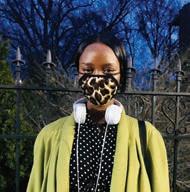
17 Sex Howard Brown delivers free sex kits right to your door.
THEATER
NEWS & POLITICS
06 Joravsky | Politics Republicans remain silent about E. Jean Carroll’s accusations against Trump.
08 Dukmasova | News Dozens of reports from inside Cook County Jail
18 Mission Uprising Theater joins a nationwide effort to protect against COVID-19.
19 Dance The Chicago Dance History Project collects art of the pandemic.
FILM
20 Fundraiser The Chicago Cinema
21 Movies of note The Half Of It is a touching coming of age story; Invisible Life is not for the faint of heart; and A Secret Love is about growing old, and every wonderful and heartbreaking thing that happens when we do.

MUSIC & NIGHTLIFE
23 Feature Fire-Toolz tries to contain the fractured emotional spectrum of loss with an album for her dead cat.
25 Records of note A pandemic can’t stop the flow of great music. Our critics review releases that you can enjoy at home.
28 The Secret History of Chicago Music The Jokers contributed one great single to the 60s garage-rock boom.
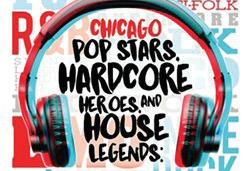
29 Early Warnings Rescheduled concerts and other updated listings
Savage Love Dan Savage offers advice to a woman whose husband fantasizes about sucking off others.
CLASSIFIEDS
In defense of clutter
nice about
The stay-at-home chronicles
the

CONTACT ANY READER EMPLOYEE, E-MAIL: (FIRST INITIAL)(LAST NAME) @CHICAGOREADER.COM
PUBLISHER TRACY BAIM
RACHEL HAWLEY
PHILIP MONTORO
HAWKINS
KERRY REID
by
BAILEY’S
Get excited for this book
volume in a new series,
20 of the best music stories
Leor Galil, is available soon.
BRIANNA WELLEN ASSOCIATE
JAMIE LUDWIG
SENIOR WRITERS MAYA DUKMASOVA, LEOR GALIL, DEANNA ISAACS, BEN JORAVSKY, MIKE SULA EDITORIAL ASSOCIATE S. NICOLE LANE
GRAPHIC DESIGNER AMBER HUFF

LISTINGS COORDINATOR SALEM COLLO-JULIN CONTRIBUTORS ED BLAIR, NOAH BERLATSKY, LUCA CIMARUSTI, MARISSA DE LA CERDA, MARI COHEN, JOSH FLANDERS, SHERI FLANDERS, JACK HELBIG, IRENE HSAIO, CATALINA MARIA JOHNSON, MONICA KENDRICK, STEVE KRAKOW, NOËLLE D. LILLEY,JAMIE LUDWIG, MAX MALLER, ADAM MULLINS-KHATIB, J.R. NELSON, JEFF NICHOLS, MARISSA OBERLANDER, MATTHEW SIGUR, CATEY SULLIVAN
DIRECTOR OF DIGITAL JOHN DUNLEVY DEVELOPMENT DIRECTOR COLETTE WILLARD SOCIAL MEDIA COORDINATOR JANAYA GREENE MEDIA PARTNERSHIPS COORDINATOR YAZMIN DOMINGUEZ
STAFF AND SPECIAL PROJECTS ASSISTANT TARYN ALLEN
SPECIAL EVENTS CONSULTANT KRISTEN KAZA
ADVERTISING 312-392-2970, ADS@CHICAGOREADER.COM CLASSIFIEDS: CLASSIFIED-ADS@CHICAGOREADER.COM
SALES DIRECTOR PATTI FLYNN
VICE PRESIDENT OF SALES AMY MATHENY CLIENT RELATIONSHIP MANAGER TED PIEKARZ SENIOR ACCOUNT REPRESENTATIVES LENI MANAA-HOPPENWORTH, LISA SOLOMON ACCOUNT REPRESENTATIVES GREG MCFALL, NANCY SANCHEZ
CLASSIFIED SALES MANAGER WILL ROGERS
NATIONAL ADVERTISING
VOICE MEDIA GROUP 1-888-278-9866
VMGADVERTISING.COM
JOE LARKIN AND SUE BELAIR
DISTRIBUTION CONCERNS distributionissues@chicagoreader.com 312-392-2970
CHICAGO

L3C
BOARD PRESIDENT DOROTHY R. LEAVELL TREASURER EILEEN RHODES SECRETARY JESSICA STITES AT-LARGE SLADJANA VUCKOVIC
CONSULTANT CAROL E. BELL
READER
312-392-2934,
2 CHICAGO READER - MAY 7, 2020 ll
30 Policy
help big donors and leave small businesses and
32
34 Jobs 34 Apartments & Spaces 34 Marketplace THIS WEEK CHICAGO READER | MAY 7, 2020 | VOLUME 49, NUMBER 31 TO
IN THIS ISSUE
There’s something
living and communal spaces that feel inhabited
actual people.
What we’re reading and watching— and
virtual birthday parties we’re attending—to pass the time.
The first
featuring
by
THIS WEEK ON CHICAGOREADER.COM ON THE COVER: PHOTO BY SAMANTHA BAILEY. FOR MORE OF
WORK, GO TO THOUGHTSINBUTTERMILK.COM.
EDITORS IN CHIEF SUJAY KUMAR, KAREN
CREATIVE LEAD
MUSIC EDITOR
THEATER AND DANCE EDITOR
CULTURE EDITOR
EDITOR
READER
(ISSN 1096-6919) IS PUBLISHED WEEKLY BY CHICAGO READER L3C 2930 S. MICHIGAN, SUITE 102 CHICAGO, IL 60616
CHICAGOREADER.COM COPYRIGHT © 2020 CHICAGO READER PERIODICAL POSTAGE PAID AT CHICAGO, IL ALL RIGHTS RESERVED. CHICAGO READER, READER, AND REVERSED R: REGISTERED TRADEMARKS ®
CITY LIFE


street view
colors



 By ISA GIALLORENZO
By ISA GIALLORENZO





“Ialways, always, always wear a mask! I have three of the same pattern,” says Zoe Hendrix Johnson.











She paired her leopard-print face mask with a chartreuse duster coat, sneakers, a flowy skirt, and a cropped polka-dot shirt: “I think that was truly the first day [during the pandemic] that I set my intention on building an outfit,” she explained via e-mail. “And strangely enough, as I was leaving my house, I checked my mail and my masks had been delivered! So I quickly put one on and then suddenly realized that it was incredibly cohesive with my outfit. It was cosmic! I really do love natural hues like brown and green, and those usually end up coordinating quite well with my mask.”

Made by Los Angeles Apparel, her “functional yet interesting” leopard-print mask helped create a striking mix. Inspired by her



mom, who has “a funky sense of style,” the 22-year-old has become more adventurous over the years: “I used to have this fear of standing out and constantly thinking about the visual perception of myself through the eyes of strangers. But now I embrace it.” She describes her aesthetic as “color-centric” and sees fashion as “the narrative of where you have been, where you want to go, of who you want to be.”
Currently taking a compulsory break from her job as a hostess at Lula Cafe, Johnson encourages people to just “go for it” during this pandemic. “Wear whatever you feel suits you and go for vibrant colors. Oftentimes life feels a bit dull (especially now), but work against it by wearing colors that truly communicate to the outside world how you feel on the inside. A touch of vibrancy won’t hurt anyone.” v
Due to business closings and for safety purposes, the Chicago Reader is going biweekly with a print run to 600+ locations, including our box route. On the o weeks (April 9, 23, May 7) the Reader is just being distributed as a free PDF, with a small press run to ful ll subscriber and library mailings.





We are also making a limited number of copies available for special short-term subscriptions, 12 weeks for $50, and every week’s issue will be mailed to your home.




Just a few hundred copies will be sold of these very limited souvenir




















of the Reader: secure.actblue.com/donate/chicago-reader-print-12

MAY 7, 2020 - CHICAGO READER 3
True
A Lula Cafe hostess chooses bright hues to cope with the pandemic blues.
ISA GIALLORENZO
editions
Important Reader News Thank you, The Reader team Find the full curated PDF download of the Reader at by Wednesday each week. chicagoreader.com/issues
YOUR OWN
It’s just a weed, Chicago
Right now may be the easiest, safest time to grow cannabis outdoors.
 By MIKE SULA
By MIKE SULA
There’s a patch of ground behind the lilies in Lauren’s west suburban backyard garden where tomatoes won’t grow. She thinks it has something to do with the soil’s pH, but whatever it is, it’s a fertile spot for a di erent kind of plant.
“Lauren,” a 40-year-old sales contractor, longtime cannabis advocate, and new Illinois medical marijuana card holder, moved back home four years ago from Colorado, where she and her ex-husband were avid gardeners. She’s using a pseudonym not because what she’s doing is illegal, but because it used to be. Back out west they grew conventionally edible plants outside, but in their basement they had an aquaponic growing system that allowed them to raise as many as 50 cannabis plants at a time. It wasn’t a big deal in pre-legal Fort Collins. “We were able to provide enough for our own consumption and provide for friends,” she says. “It was kind of what every-
body did.”
When the couple split up and Lauren moved into her new home, she didn’t want to deal with the lights, chemicals, exhaust systems, insect invasions, and overall expense one must contemplate when deciding to convert a portion of the home to cannabis cultivation. “It’s a couple thousand dollars between lights and the way you’re gonna do it,” she says.
That spring, a friend gave her three seeds from a plant he grew that produced buds that she liked. She never knew the name of the strain, but she germinated them and put them in little pots and raised them up under a headlamp until early June or so, when they’d grown to about a foot and a half in height. Then she took them out behind the lilies and planted them where the tomatoes won’t grow.
She mostly left them alone all summer, just giving them water when they needed it, until late September when they’d grown about 3½-4
bushy feet, their stems ending in narrow clusters of lime-green flowers laced with orange hairs, loaded with cannabinoids and terpenes. These she harvested and trimmed, then hung them in the garage from wire coat hangers until the chlorophyll dried up. After that, she “cured” them in Tupperware for a few weeks until they were ready for consumption.
“I’m pretty familiar with what’s good quality and what’s not,” she says. “These were really good quality.” She says she grew about six to eight ounces of cannabis flower from those three mysterious plants, enough to meet her needs through the holidays.
Illinois’s newly enacted Cannabis Regulation and Tax Act allows for medical card holders to grow up to five plants per household. But the language about where they’re grown is vague. Plants must be in “an enclosed locked space” where they’re not “subject to ordinary public view” and are “secured from unauthorized access, including unauthorized access by a person under 21.”
On its face it seems the safest place to accomplish this would be indoors. And if you decide to go that route you’re in luck. The majority of educational and commercial resources available for home cannabis cultivation is geared toward the indoor grower—or what one local outdoor gardening expert I know calls “bro-growers.”
Early this spring I attended a class at an indoor gardening supply store on how to grow cannabis. The instructor was another former Colorado grower, and he was armed with a wealth of information on everything you need to know about inside cultivation: seeds, strains, fertilizers, lights, pumps, timers, tents. It got complicated fast. The only thing he had to say about growing cannabis outside was this: “You don’t want to do that. You won’t be happy.”
Well, he might not be happy, but cannabis has been happily growing outdoors, unaided by timed LED light cycles, humidifiers, and synthetic fertilizers, for thousands of years. And while the midwest isn’t the Emerald Triangle, it’s still a good place to grow it. As long as you have a humble patch of secluded sunlight—on a porch, a balcony, or backyard—there might not be a better time than a quarantined Chicago spring to grow your own.
“This plant grew wild all across Indiana,” says Shawn Odneal, a chemist and owner of Root 66 Garden Shop in Bensenville, which specializes in indoor aqua- and hydroponic growing systems. “Even ten years ago it was still growing wild in the ditches. This is where hemp and cannabis grows in the U.S. The climate is perfect for growing cannabis outdoors—for at least one season.”
Odneal says he knows as many as a dozen people who are planning to grow cannabis for personal use outdoors this year—including himself. But his qualification “at least one season” underscores a division in the world of weed cultivation between inside and out. He believes growing outside is fine for beginners, but he also thinks they should graduate to more advanced, controllable, and potentially more productive indoor gardening.
Johanna Silver believes otherwise. “A lot of these indoor cannabis growers have only grown weed indoors,” says the Berkeley-based gardening expert and author of Growing Weed in the Garden: A No-Fuss, Seed-to-Stash Guide to Outdoor Cannabis Cultivation. “They really don’t understand how plants grow outside. They only speak indoor cannabis cultivation. I’m probably gonna offend a lot of people, but I don’t think an indoor cannabis grow is a ‘garden.’”
But Silver and Odneal agree on more than they might think. They both grudgingly o er some version of the oft-repeated cliche “there’s a reason it’s called a ‘weed.’”
For one thing, it can largely take care of itself. If you’re growing outdoors with a reasonable set of expectations, there’s not a
4 CHICAGO READER - MAY 7, 2020 ll FOOD & DRINK GROW
RACHEL HAWLEY
Search the Reader’s online database of thousands of Chicago-area restaurants at chicagoreader.com/food.
lot to worry about as long as you take some fundamental, low-intensity steps. You may not duplicate that 23 percent THC hybrid redolent of kiwi and Smurf poo that disappeared from the dispensaries on January 2, but you won’t pay as much for it either.


First you need seeds. At this stage in the season, Odneal recommends that outdoor growers get a hold of autoflower seeds, which he doesn’t prefer for indoor growing. Plants from classic cannabis seeds are photoperiodic, meaning that after a “vegetative” growth state, they need to be exposed to a reduction in light in order to flower. That’s fine indoors if you can control the light, but outside they may not have enough time to finish before the days get too cold and short. Autoflower seeds flower on their own within two to four weeks of germination. They may not produce as much as photosensitive plants, but they do it fast—and they’re discreetly sized. Silver, who also generally disapproves of autoflower seeds, agrees that they are probably the right move for Chicago’s climate right now.
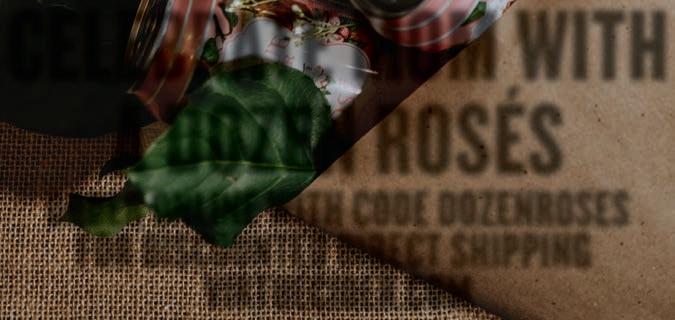
Cannabis is also dioecious—it grows both male and female plants. Typically most people growing for consumption don’t want the males, which produce seedy flowers that are thought to be less potent than seedless—aka sinsemilla—unpollinated female flowers. If you want to avoid the process of “sexing” your plants, i.e. weeding out the males that will sprout up and pollinate your females, you can buy feminized seeds, guaranteed to produce only female plants.
All manner of seeds are widely available for purchase online. A local source, Mosca Seeds, promises shipment of autoflower seeds within one to two days. Odneal, who advises legal and medical grow spaces across Chicago, can’t sell seeds, but services like his will help select outdoor-appropriate strains that are good for treating specific ailments or diseases.
Once seeds are germinated, it’s a matter of babying them inside until it’s warm enough for them to go out for good. This means little more than keeping them under enough light until they reach a foot or so—a bright windowsill can work. Most importantly, don’t overwater them, and don’t overfeed them with fertilizers (in fact, don’t feed them at all at this stage)— the two most common rookie mistakes, according to Odneal. “Your challenge is to get a nice healthy teenager, grown indoors, so that you’ve got a month and a half head start before you plant it outside,” he says. That’s about the same time you’d put tomatoes in the ground; in Chicago, late May to early June.



Another option this late in the game is planting clones, or cuttings from older plants. If you can find them, they’re a bit more finicky. They don’t have a strong taproot like seedlings do, and they need a careful transitioning period to get them used to the outdoors, according to Silver. The upside: you know you’re getting a female plant.
The fun part is watching them grow. Sure, there are things to think about over the summer. Containers or soil? Maybe you need a cheap portable greenhouse to protect your girls from wind and rain. Fertilize or not? (Less is more, say Odneal and Silver.) Pests and disease can be a problem, but they can be dealt with (Lauren never had to).
Silver’s book, which addresses all these matters and more, is the best, most reassuring resource I’ve found about growing small amounts of weed outdoors. “I am a super lazy gardener and I do not give many of my plants special love,” she says. “You have to be pretty tough to survive in my garden.”


It may be that the biggest problem for outdoor growers in Chicago is other people—thieves in particular. Don’t be surprised if it happens, Odneal says. “They’ll wait until the week before you’re ready to harvest and they’ll be on it.”
That’s why the phrases “subject to ordinary public view” and “secured from unauthorized access” are just as important for plants as they are for city growers. Though crime was down 30 percent last month while the Chicago Police Department was busy enforcing the stay-athome order, that doesn’t mean the five-0 won’t come snooping around this summer if your nosy neighbors get a whiff of the Blueberry Mu n flourishing next to the grill, or the Blue Cheese in the paint bucket on the balcony. “If residents report suspected illegal possession, distribution, or growth of cannabis, we will respond and investigate accordingly,” says CPD spokesman Luis Agostini. “Any enforcement measures of personal cannabis use, growth, or possession will be in accordance with department directives and the Cannabis Regulation and Tax Act.”
But maybe your neighbors are into it. Lauren out in the western suburbs gave clones of her plants to her neighbors on either side, and they’re now growing their own too. Her best advice: “Learn as much as you can about the process but don’t overthink it. People make it really complicated and it doesn’t have to be.” v
MAY 7, 2020 - CHICAGO READER 5 FOOD & DRINK
@MikeSula
NEWS & POLITICS
POLITICS
The great evil
Republicans remain silent about E. Jean Carroll’s accusations against Trump.

 By BEN JORAVSKY
By BEN JORAVSKY
Amid the furor over Tara Reade’s sexual assault allegations against Joe Biden, it’s easy to forget that his Republican opponent has been accused of rape.
As well as 24 or so other allegataions of sexual misconduct, including sexual assault and harassment against women.

That opponent is, of course, Donald Trump, to whom the Republican Party has sworn a blood oath of fealty—allegations of rape being no matter.
I remind you of this not to minimize Reade’s allegation, but to point out the gaping political divide between the parties when it comes to violence against women.
Democrats have to at least pretend to care about the victims. Republicans don’t even pretend—their base clearly worships Trump no matter how many women come forward to say he’s raped, assaulted, groped, assailed, or maligned them.
The only time Republicans seem to care about sexual assault against women is when it can be used to score gotcha points against Democrats—particularly Democratic women—who stood with Christine Blasey Ford when she came forward with her complaint against Brett Kavanaugh.
Back to Trump’s rape case . . .

His accuser is E. Jean Carroll, a prolific and well-regarded journalist who, among other things, wrote “Ask E. Jean,” a popular advice column for Elle. In January, Elle didn’t renew Carroll’s contract.
“Because Trump ridiculed my reputation, laughed at my looks, & dragged me through the mud, after 26 years, ELLE fired me,” Carroll tweeted. “I don’t blame Elle. It was the great honor of my life writing ‘Ask E. Jean.’”
Carroll went public with her rape charges last June, when New York magazine published an excerpt of her book What Do We Need Men For? A Modest Proposal. Here is what she says happened during the fall of ’95 or spring of ’96—she’s not sure of the date . . .
She bumps into Trump outside a Bergdorf Goodman store in New York City. He recognizes Carroll from her cable TV show. He asks her to help him buy a woman a present. He leads her to a dressing room to try something on to see how it looks. And then . . .
“The moment the dressing room door is closed, he lunges at me, pushes me against the wall, hitting my head quite badly . . . He seizes both my arms and pushes me up against the wall a second time . . . jams his hand under my coat dress and pulls down my tights . . . The next moment, still wearing correct business
6 CHICAGO READER - MAY 7, 2020 ll
How evil? This much.
MICHAEL VADON / FLICKR
attire . . . he opens the overcoat, unzips his pants, and, forcing his fingers around my private area, thrusts his penis halfway—or completely, I’m not certain—inside me . . . I finally get a knee up high enough to push him out and o and I turn, open the door, and run out of the dressing room.”
“The Donna Karan coat dress” she wore that day “still hangs on the back of my closet door, unworn and unlaundered since that evening.”

Don’t forget that dress, people.
When asked about Carroll’s accusation, Trump trashed her.
“She’s not my type,” he said. As if he might have raped her if she was his type.
This is vintage Trump. He frequently makes jokes about the women he’s maligned, physically and/or verbally, over the years. His acolytes love when he does this. It’s so, what— anti-politically correct?
Remember his exchange with former Fox anchor Megyn Kelly during a Republican debate in 2015.
Kelly: You’ve called women you don’t like fat pigs, dogs, slobs, and disgusting animals . . .
Trump: Only Rosie O’Donnell . . .
As the Republicans roared with laughter. Looks like Trump’s misogyny is the new normal. The press even asked him to weigh in on Reade’s allegations against Biden—like he was a disinterested party. Apparently, Harvey Weinstein was unavailable for comment.
Now back to that dress . . .

In November, Carroll sued Trump in New York state court for defamation. And in January, she asked the presiding judge to order Trump to provide a DNA sample for “analysis and comparison against unidentified male DNA present” on the Donna Karan dress.

Trump’s lawyers responded by saying he’s just too busy to deal with Carroll’s lawsuit: “If the court does not stay this action, the president will su er irreparable harm.”
In response, Roberta Kaplan, Carroll’s lawyer, noted that Trump had recently filed a defamation lawsuit against the New York Times
“Here, we have a President who is not only defending cases where he is not asserting this immunity, but, as I just noted, he has actually brought cases as a plainti ,” Kaplan told the judge. “That kind of cherry picking, your honor, is an intolerable abuse of the process.”
We’re still waiting for that judge’s ruling. Don’t worry—I’ll keep you posted.
As I’ve said before, I’m no fan of Biden—I
voted for Bernie. I was sort of hoping Biden might step down to let someone more vigorous take the nomination.
Actually, I have this fantasy where all of the prominent officials charged with sexual assault step down. That means Trump, Biden, Kavanaugh, Justice Clarence Thomas. Let’s not forget about him.
The Democrats would then nominate a candidate to run against Vice President Pence with the winner getting to name two Supreme Court nominees.
How about newly elected president Elizabeth Warren nominating Anita Hill to replace Thomas? Better late than never for justice to be served.
I know—none of this will happen. It looks like Biden vs. Trump: the Democrat accused of sexual assault vs. the Republican accused of rape. And assault. And groping. And harassment . . .
In previous elections, I found myself voting for centrist Democrats because they’re the lesser of two evils.
But this time is more dangerous than most. This time we’ve got Trump supporters—waving signs with swastikas and Nazi slogans— demonstrating in downtown Chicago against Governor Pritzker, who’s Jewish. Meanwhile, the Republicans remain as silent as church mice.
Yes, these are dangerous times. This time I won’t be voting for the lesser of two evils. I’ll be voting against a great evil. v
@bennyjshow
MAY 7, 2020 - CHICAGO READER 7 NEWS & POLITICS
DEATH trap
This story was originally published in The Appeal.
The Cook County Jail in Chicago, America’s largest single-site pretrial detention facility, is now one of the top coronavirus hot spots in the nation. Despite an April 9 order from a federal judge requiring Sheri Tom Dart to provide COVID-19 testing for symptomatic prisoners, implement social distancing, and distribute adequate sanitation and personal hygienic supplies, more than two dozen detainees interviewed by attorneys, advocates, and reporters in the last two weeks describe living conditions conducive to the spread of the virus and a lack of access to testing. Last Monday, U.S. District Judge Matthew Kennelly issued a preliminary injunction ordering the sheri to do more. To date, the sheri ’s o ce has reported more than 800 confirmed cases of the virus, more than half of them among prisoners. So far, six prisoners and one guard have died of COVID-19.
This crisis has generated an unprecedented amount of prisoner testimonials about jail conditions. Their narratives are remarkably similar to one another and at stark odds with many of the sheri ’s claims. For what seems like the fi rst time in Dart’s 13-year tenure, complaining voices of the people in his custody outweigh his professional public relations operation. Some criminal justice reform advocates are also fi nding a grim upshot to the coronavirus outbreak at the jail: It is proving that a drastic reduction of pretrial detention is achievable.
The criminal justice apparatus in Cook County lumbered to prepare for the inevitable arrival of the virus at the jail. On the eve of the statewide lockdown on March 21, the Cook County public defender’s o ce fi led an emergency motion, with support from public health experts and 25 advocacy groups, demanding the release of all medically vulnerable detainees from the jail. This didn’t happen but judges did begin expediting some bail review hearings and an increasing number of defendants were put on house arrest. The state’s attorney’s office, meanwhile, stopped prosecuting low-level crimes, such as drug possession. In recent weeks the population of the jail—a 96-acre facility designed to hold more than 10,000 prisoners—has dropped by more than 1,300 people to a low of less than 4,200. But it was not enough to prevent the outbreak.
By MAYA DUKMASOVA
The fi rst case of COVID-19 among prisoners was confirmed on March 23. A week later, 134 detainees were sick. On March 27, Dart held a press conference touting “single-celling” for almost all prisoners and saying reports of lack of access to soap were “lies.” Meanwhile, the head of the jail’s medical division (which is under the purview of Cook County’s Health and Hospitals System and not the sheriff’s office), Dr. Connie Mennella, said the division was “testing every person who is symptomatic,” but the severity of the outbreak grew precipitously. That same day the union representing health-care workers at the jail called for a “drastic” reduction of the jail population.
On April 3, a federal class action lawsuit was filed against Dart over jail conditions and by the end of the second week of April, some prisoners went on a hunger strike demanding access to soap and other sanitation supplies.
“The beds are three feet apart, the phones are two feet

8 CHICAGO READER - MAY 7, 2020 ll
‘ Dozens of reports from inside Cook County Jail paint a grim picture as COVID-19 cases soar.
SELIM BLK / UNSPLASH ’
apart and then the seats at the table are a foot apart, so there is no social distancing,” said Jafeth Ramos, 23, who has been held at the jail without bond on murder charges since 2016 and is housed in a dorm-style tier with 25 other women. “I feel like it’s a death trap in here because we don’t have no fresh air from outside . . . the air we breathe is recycled air from the vents so the coronavirus is in the air.”
Sheila Rivera, a correctional officer who died on April 19, was a guard on Ramos’s tier. Ramos said that although her unit is now on “quarantine,” with all prisoners’ temperatures being checked twice a day, it’s impossible to get a COVID-19 test for any symptoms other than fever. She added that prisoners receive a mask every three days and two hotel-size soap bars each week, but that their bed linens haven’t been washed since the start of the outbreak. In a statement, a spokesperson for the sheri said new masks are issued to detainees every day and “laundry continues to be done daily.”
Ramos said prisoners have access to hand sanitizer on the wall of the dorm, but the cleaning supplies are watered down, and it’s impossible to maintain proper hygiene with shared showers, toilets, and phones. Ramos believes she has contracted the virus already, as do many of the other women in her dorm. “I had the hard breathing, the cough, the stopped-up nose, I couldn’t taste or smell and I had a headache, but I never had the fever,” she said. “If you don’t have a fever they don’t test you.”
Affidavits from 13 prisoners filed in the federal lawsuit describe similar conditions in men’s divisions of the jail: units where people are still held in dorms or two to a cell; no proper social distancing or cleaning of shared showers, toilets, and tables; a lack of access to testing, even for those who had acute symptoms or had contacts with others who tested positive. Prisoners have reported a total shutdown in non-COVID-related medical services: diabetics can’t get blood sugar checked, chemotherapy appointments have been canceled, other requests for medical care go unanswered. South Side Weekly ’s recent publication of six interviews with people in the jail’s Residential Treatment Unit o ered a similar picture.
A spokesperson for the sheriff denied the cessation of medical services. “These a davits have not been corroborated by any underlying evidence or documentation,” he wrote in an e-mail to The Appeal. “Detainees continue to receive their medication on schedule and medical requests continue to be processed.” He added that questions about medical
services at the jail should be directed to the county health and hospitals system; its representatives didn’t respond to multiple requests for comment.
Advocates behind the federal suit are concerned that the official response to the pandemic endangers pretrial detainees’ health and violates their constitutional rights.

“The [Illinois] Supreme Court has put in place a system that takes pressure o of judges to hold trials and resolve cases but provided no corresponding guidance on how to handle the rights of people who remain incarcerated during the suspension,” said attorney Sharlyn Grace, executive director of the Chicago Community Bond Fund, one of the groups that brought the suit on behalf of jail detainees and collected testimonials from more than 500 of them since the start of the pandemic. “This is a recipe for indefi nite detention.”
Brandon Perkins, 27, has been at the jail without bond since 2016 on a felony murder charge. He’s discouraged about delays in nonemergency case processing due to the statewide lockdown. “If we can’t get to court we can’t move on from this place,” he said. “It’s worse to be here than in prison because there’s so much uncertainty.”
Perkins is held in a single cell at Division 11 and was one of the organizers of the hunger strike over lack of access to proper sanitation, delays in case processing, and visitation cancellation. He said conditions inside the jail have improved somewhat since the strike. Supervisors had come to speak with prisoners, and everyone on his tier now gets a mask per day and access to hand sanitizer; visits are slowly being coordinated through Skype. Still, he said he has been unable to see a doctor about a shoulder injury and get a prescription refi lled.
Ioan Lela, also in Division 11, was mid-trial for 2016 murder and home invasion charges when the pandemic lockdown began. He said he had COVID-like symptoms for two weeks but wasn’t able to get a test. He’s representing himself in court and said the pandemic has made it even harder for a pro se defendant like him to have a fair hearing.
“I did my opening argument and cross examination of the fi rst witness on February 26 and I was supposed to go back to trial April 14, but of course that didn’t happen,” Lela, 38, said.
Prisoners that The Appeal interviewed all said they felt like their lives don’t matter. “I guess because they think we’re criminals and we’re supposed to be here,” Ramos said.
Perkins said it seemed like some community sympathy was building, with a caravan of supporters mobilizing outside the facility on
April 7 and nurses staging a protest on April 10, but then, on April 14, Dart’s o ce released video of an attack on correctional o cers by people held in Division 9. The video clearly showed people housed two to a cell; it’s not clear whether the attack was related to the COVID-19 outbreak.
“They kinda messed it up for us, the people who did the attack,” Perkins said. “We kinda had some momentum going. Tom Dart was saying they’re trying not to release any violent o enders and I feel like it adds to the stigma.”
Lela said the release of the video seemed to be a calculated public relations move on Dart’s part as the sheriff was facing increased criticism for his handling of the virus outbreak. “Tom Dart is quick to release a video when it benefits them.”
In an e-mailed statement, a spokesperson for Dart denied or challenged the claims made by the detainees that The Appeal and others interviewed. “The Sheriff’s Office continues to work with all federal, state, and local partners to ensure we have appropriate supply of all materials necessary to keep our staff and detainees as safe as possible,” he wrote. “The information provided to you is both false and uncorroborated by any evidence or documentation.”
According to Judge Kennelly’s preliminary injunction, Dart had until Friday to further improve sanitation, increase testing, reduce dorm-style housing, and all but eliminate double-celling. But with the infection rate at the jail almost 20 times higher than in Cook County as a whole, it’s likely that more prisoners and guards will get sick and may die in the days and weeks to come.
Although the rapid spread of the virus at the jail has tarnished Dart’s reputation and exacerbated a public health emergency in Chicago, it has also shown that mass decarceration of people accused of crimes is within reach if the political will is there.
“People are understanding through the conversation about COVID-19 in jails and prisons how dangerous jails are,” said Grace, whose organization has been on the front lines of fi ghting to abolish money bail in Illinois and managed to bail out 20 people from Cook County in the last few weeks. “Jails have always been unhealthy, unsanitary places where people don’t receive the care they need. They’ve always had a high rate of mortality. People are hopefully coming to understand that through this acute crisis, and that could be a lesson we take forward to reduce the use of pretrial jailing.” v

MAY 7, 2020 - CHICAGO READER 9
@mdoukmas
Covert
On motherhood, the apocalypse of the interior life, and sheltering in place on the other side of Lake Michigan.
 By LIESL OLSON
By LIESL OLSON
If you drive south out of Chicago through the industrial plumes of Gary, Indiana, then around the southern edge of Lake Michigan, then north beyond the towns of Harbor Country, then o the interstate onto a
stretch called Blue Star Highway, then you’ll find dirt fire lanes that end in wide sweeps of dune and beach. Here, in a town called Covert, I’ve been weathering out the pandemic with my family for the past six weeks.
Covert. The New England settlers of this town, in 1855, knew the word to mean shelter and retreat. They likely took the name from the Book of Isaiah: There shall be a tabernacle for a shadow in the day time from the heat, and for a place of refuge, and for a covert from storm and from rain.
But we are hardly at the mercy of an Old Testament God. We are wholly at the mercy of ourselves.
My husband and I have three boys, ages twelve, ten, and seven. We drove up for what we thought might be a long weekend, and then stayed to “shelter in place” after
Chicago’s mayor closed the city’s parks and lakefront. I packed an old edition of Henry James’s long, late novel The Ambassadors , as if knowing something—or nothing—was going to happen. We arrived wearing parkas. Last week, when I fi nished the novel, my boys wore shorts when I marshalled them outside. Respite from the storm.
We are “doing fine” up here, I say to friends, which hides the intricate dramas of private life even as it is mostly true. A more exacting response would chart the wild calibrations of my mind as I toggle between newsfeeds, conversations with colleagues,
10 CHICAGO READER - MAY 7, 2020 ll
NEWS & POLITICS
ESSAY
an excess of e-mails, late-night reading, and a desire to put something into words, while fully knowing that I will fail to track the gross transformations of what this is . This is not “working from home,” this is an apocalypse of the interior life. That life, my life, is scarcely threatened by the exceptional risks taken every day by cashiers, delivery people, and health-care workers. I am a separate story, or rather, I am no story at all. The forms that shape my days, my thinking, have all but disappeared. Gone are hours at the library in Chicago where I work; the meals with others; unprompted conversations; my time with women.
What I have been “doing fi ne” is being a mother. More than my husband—dare I say, much more—I am absorbed by the kind of labor that is still wholly invisible to economists. I am the maker of time and how it is partitioned: “remote learning” for my older boys; mostly reading with the youngest; the meals; the walks; the calls to friends and family. I am also intimate with the vacuum. Lambert Strether, the middle-aged protagonist of The Ambassadors , wonders if life has not, in fact, passed him by. From the New England town of Woollett, Massachusetts, he arrives in Europe to fetch Chad Newsome, the wayward son of a Woollett woman, a widow, to whom Strether is engaged. But Strether dawdles. He discovers the subtle refinements of Paris, embodied in Madame de Vionnet, Chad’s mistress. The only noticeable child in The Ambassadors is Madame de Vionnet’s daughter, nearly grown, who appears at a garden party in white dress and “softly plumed white hat,” delivered to Strether like a plucked blossom. As for Chad, exquisite and worldly, he assumes nothing of the customs of his past life. It would have been hard for a young man’s face and air to disconnect themselves more completely than Chad’s at this juncture from any discerned, from any imaginable aspect of a New England female parent. Chad looks as if he has no mother, or certainly no prim mother from New England.
Is freedom but a radical disconnect from the duty of one’s family? The risk of experience beyond manners or convention? Or is it a kind of reinvention, a reseeing of other people, an openness to how relationships change? James’s novel, stunningly, does not know.
When Strether initially arrives in Eu-
rope, he meets a charming, discreet woman named Maria Gostrey, who identifies his American “failure.” The two take a walk through an ancient walled city, during which Strether fitfully checks his watch.
“The failure to enjoy,” Miss Gostrey tells Strether, “is what I mean.”
Many of our days in Covert, with devotion, with enjoyment , I have found beauty in the cycle of family life, especially in the time we spend outdoors. We walk through thick woods grown out of the ruin of ancient forest. Logging created Covert, a scrappy frontier town now credited for its curious history of racial integration. Covert was never a postbellum Freetown nor a utopian community: its integrated schools, churches, and political systems—as early as the 1860s—seem to have been a result of scarce necessity. I wonder about this history, about what humans are capable of becoming, when they abandon how they’ve been told to live.
Keep a schedule, everyone says, especially with young children. But some of the brightest hours are unplanned. A few days ago, my 12-year-old whipped ahead of me as we were running, and I felt elated, in the middle of the day, in a brief burst of sun. I caught up at the top of the hill, where we collapsed into the dune grass. Our time felt stolen, clandestine.
But what sets me afl ame is the uncertainty of this time and its lack of acknowledged value. “Essential” I am not. The plot of each day is open and di use, developing towards nothing. It will not surprise me if I remember little distinct about this time other than the way that it feels: the low-fi hum of restlessness and unease, and the cloak of guilt that shrouds me. Who am I—with my family, my health—to complain? I know that my situation, relative to many, is a small song of inconvenience. Yet how much time, how much? The truth is—here it goes—that my children do not need this much of me. They require other people, other encouragements, other ways of thinking and explaining. A mother can give and give, but it will never be enough. This is the sharpest, most familiar pang of quarantine.
I exit into James’s difficult prose. Reading at night, the novel demands a kind of perverse focus, a consideration of language that would be impossible through the hum and call of daylight hours. I seem to have sought the hardest thing—pure attention, all of it. But The Ambassadors is also noth-
ing. It leads me nowhere, untethered entirely from my own professional projects. I am not teaching James, or talking about James, or writing about James. Yet here I am, the lake outside black and loud, putting this all into words.
“Never in the morning very late,” Lambert Strether lingers over co ee and a roll in his hotel’s salle à manger, a place for him of “rich rumination.” He rethinks his conversations; he wonders if he has understood everyone clearly. Strether will advise Chad to stay a little longer in Europe, to let his relationships run their course; to delay his return to Woollett and the clutches of the family business, the profits of American capitalism.
I have been waking up very early, too, hoping to work before my boys thump out of their beds. I hesitate before sending detailed e-mails to colleagues: a fall seminar, a spring conference, an exhibition in 2021. What are the ethical strategies for planning past this pandemic? Who can even imagine this far out? The hours of the day dissolve quickly and the present moment, revolving, seems our only center. A close friend, on the phone, tells me to slow the fuck down . A few days later, the New York Times basically says the same thing, in a column called “Wellness” or “The Upshot” or “Smarter Living.” Or maybe it was the Chicago Tribune , which still publishes—the charm of it—horoscopes and comics. The article has disappeared, and I keep spinning.
At the end of a Zoom call with colleagues, as whitecaps pound the beach, curl and howl, I muse hopefully: perhaps this period of isolation will teach us how we can collectively mobilize for impending doom. Might we demand that our government enforce dramatic changes in our habits of consumption? Perhaps we can now be forced, really forced, to save our planet. What if?
My colleagues are dubious. How are your boys?
One afternoon, when my boys seem briefly interested in what I’ve been doing, I tell them about The Ambassadors . I try to describe James’s late style: the dependent clauses, the circumlocutions, the intimations in dialogue that pivot on the words “all” and “nothing.” Lambert Strether roams Paris and awakens to the sensual life, through which he produces “nothing.” I tell my boys that the novel is about fi nding freedom. Many people, it comes to my attention, are trying to find it. Just look on Twitter:
#HankJim2020.
Is there a plot? asks my middle son. Who’s the bad guy? asks the youngest, jumping up and down on the sofa.
No crisis can eliminate their animal joy. They have located sticks in the woods and watched YouTube videos about how to fi ght with swords. They have dug many muddy holes. My middle son, claiming the lake to be warm, shucked off his clothes and ran into the waves, whooping. Yet inevitably, for some part of the day, boredom hits. Yesterday afternoon my youngest looked a little lost—or rather, I’d lost him, letting him meander from room to room, checking our screens. He drew, he snacked, he whined for my attention. Finally, he stood up on a chair, spreading his arms like wings, like the characters in yesterday’s book who mimic Leonardo da Vinci’s big mechanical bird. My son took a deep breath and leapt out of his chair, falling to the ground, rolling on the floor with wild laughter.
Was Lambert Strether ever a child? Does he remember?
A friend of mine from New York, at the center of the crisis, quarantined by himself in his apartment, sends me an essay by James Baldwin. The Ambassadors was a lodestone for Baldwin, who sees Strether as defined by his middle age, his country, and his whiteness—a Puritan, who learns to relinquish the values of a utilitarian way of life. Strether experiences some of the “sorrow and joy” that is the human condition, that—for Baldwin, in 1966—belonged most visibly to Black Americans who felt the pain and possibility of the civil rights movement, when the achievements toward equality were less palpable than the beautiful struggle itself. Strether has come to “trust life,” to experience it fully without proof of its value. This is the realm of art, of the sensual, of human meaning that cannot be bought or sold.
It is April 20, 2020, and no governor has yet to “open the economy.” Light strikes the water in a patchwork of green and grey, modulating the afternoon hour. O and on, I watch the arc of the sun before it disappears behind the fl atline in the direction of Chicago. I look for a conclusion, then, behind that blaze, a revelation of meaning. It is hard not to demand something from all that beauty. There it goes again, the sun! says my youngest. Yes, there it goes. v
@LieslMOlson
MAY 7, 2020 - CHICAGO READER 11
SHANE TOLENTINO NEWS & POLITICS
ARTS & CULTURE
everybody. The arts should be for everybody and not just for a few people.”
Counting for culture
How the census impacts arts funding
 BY KERRY CARDOZA
BY KERRY CARDOZA
You might know that data from the census is used to draw congressional and state legislative districts, determine the number of House seats a state has, and distribute federal funds for things like Medicaid, schools, and emergency preparedness. (That last one’s particularly relevant now.) But you might not know that getting an accurate census count is also important for the arts. Census-related funding in Illinois helps put foreign language curricula in schools,
supports the careers of local artists in every discipline, and assists with keeping museums like the Block and the National Museum of Mexican Art free of charge.
“We want everybody to be able to experience art,” says Carlos Tortolero, the president and founder of the NMMA in Pilsen. “It’s not for the elite, it’s not for the well educated, not for people with money. It should be for everybody, which is why the museum is free, that’s been my philosophy about being accessible to
The census takes place every ten years. It is widely acknowledged that Illinois was “historically undercounted during the 2010 Census efforts,” and is expected to be undercounted again this year. The ongoing coronavirus pandemic only exacerbates this problem. According to a 2018 George Washington Institute of Public Policy report, in 2015 alone, Illinois lost more than $122 million in health and human services funding for every 1 percent of the population not counted in the 2010 Census. Cook County Board president Toni Preckwinkle puts it another way: “Every person represents between $1,400 and $1,800 per year in federal funding.” The 2010 response rate for Chicago was 66 percent; this year’s goal is 75 percent. Of course, an undercount impacts the arts landscape of Illinois as well, which is devastating for a field
that is already underfunded.
“The cultural landscape of the city is absolutely integral as to why this is a world-class city,” says Mark Kelly, the commissioner of Chicago’s Department of Cultural A airs and Special Events (DCASE). “It’s the cultural life of Chicago—and architecture and visual arts and music and theater and dance and the list goes on—that makes this an important city that people come from across the world to visit. And the economic equation for the arts, it always needs and assumes governmental support because it’s not built on a for-profit foundation. It’s always underfunded, underappreciated. We absolutely need governmental funding.”
Federal arts funding is directed to states by the National Endowment for the Arts.
By law, 40 percent of the NEA’s annual budget is allocated to state and regional
12 CHICAGO READER - MAY 7, 2020 ll
CENSUS
&
arts organizations. For the 2018 fiscal year, NEA’s programs budget was $121,650,000, so $48,322,000 was directed to arts organizations across the country. Illinois’s federal funds go to the Illinois Arts Council Agency, which then disseminates that money to artists, museums, and arts organizations across the state. State organizations are required to match that federal funding at least one to one. In 2018, the NEA granted $850,800 in federal funds to the IACA, which contributed an additional $9,471,730. Population is an important factor in calculating how much grant money the NEA gives to each state and regional arts organization.

The IACA’s main initiatives are to provide operating and technical support to arts programs throughout the state, advance arts education, and support working artists. The IACA funds statewide e orts, such as Poetry Out Loud and the biennial conference One State Together in the Arts. It also offers a wide range of funding opportunities, including grants for touring Illinois artists or ensembles; support for individual artists or arts programming; summer youth employment in the arts; an ethnic and folk arts master/
apprentice program; and an Artist Fellowship program, which supports established artists.
Edra Soto was a 2019 fellowship recipient in the category of visual-based arts. She was one of 17 recipients, each of whom was awarded a $15,000 grant. For Soto, an interdisciplinary artist who creates large-scale and cost-intensive sculptures and installations, securing outside funding is crucial.
“It’s a really unstable situation, making large-scale projects,” she says. “It can become a challenge. Sometimes institutions don’t have enough money to support those projects. Sometimes I use a grant to supplement what institutions cannot supply.”
The IACA fellowship helped Soto fabricate and install two iterations of her ongoing project, “GRAFT.” One was installed at the Chicago Cultural Center, the other at the Smart Museum. Soto considers “GRAFT” an architectural intervention. It’s a poetic recreation of what are called rejas, or iron screens, which are ubiquitous in the artist’s native Puerto Rico.
“Everything always costs much more than anticipated,” Soto says of her work. “It’s not only the fabrication but the installing, trans-
porting. Insane. People don’t understand how much it costs to do that, and how you have to always patch things, however the money comes in.”
The IACA also disseminates funds through its Community Arts Access program, which designates arts organizations throughout the state as regranting entities. In Chicago, the CAA partner is DCASE. DCASE already awards grants to artists and art organizations from its own budget, but its partnership with IACA allows it to disburse an additional $140,000 each year to local artists through its Cultural Grants program. DCASE awards a total of $700,000 annually in competitive, panelist-reviewed individual artist grants. In 2020, 171 artists received funding; the average award was $3,600.
“It’s not just a vote of confidence, because they received grants in this competitive process, but also it just keeps them going and respects their importance as part of the economic life of the city,” Kelly says of the artist grantees.
Public funding is also useful as a vote of confidence for private philanthropy. The NEA website notes that “even a low level of
public funding can stimulate private giving.” NEA grants “provide a signifi cant return on investment of federal dollars with $1 of NEA direct funding leveraging up to $9 in private and other public funds, resulting in $500 million in matching support.” The Block Museum found this to be particularly true for their recent, groundbreaking exhibition “Caravans of Gold, Fragments in Time: Art, Culture, and Exchange across Medieval Saharan Africa.”
The Evanston museum has received some funding for general operating expenses from the IACA for at least half of the last ten fiscal years, though the amount makes up only a small amount of total revenue for the Block.
(In fiscal year 2018, the IACA contributed $20,200; the Block’s total revenue that year was $4,785,626.)
Lisa Graziose Corrin, the Ellen Philips Katz Director of the Block, says the museum was able to leverage IACA funding for “Caravans of Gold,” which subsequently won a highly competitive National Endowment for the Humanities grant.
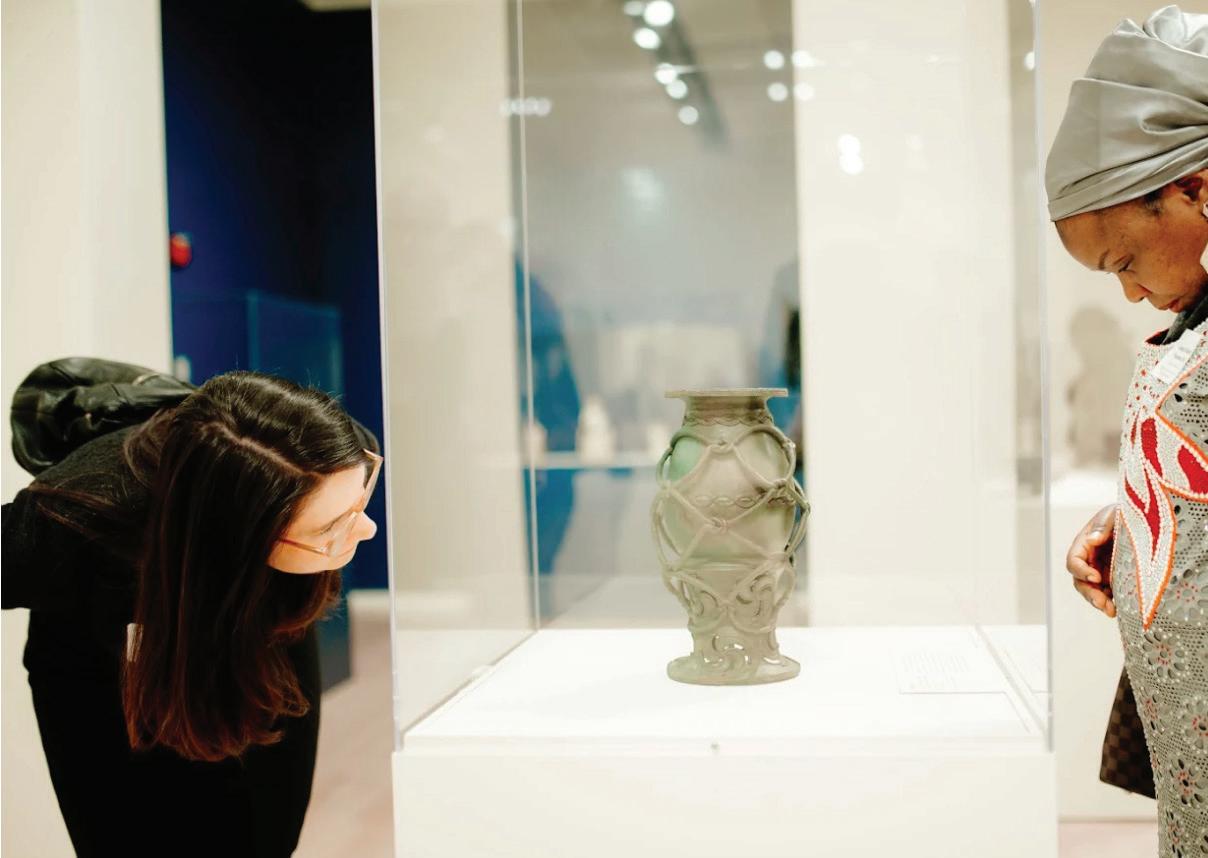
“When you have support, when you’re applying for very big grants, whether it be NEA, the NEH, or competitive national foundations, if you are able to say, well we’ve already raised X, or we will match what you give us, with the state Arts Council funding, you begin to be able to leverage in order to demonstrate capacity to do things at the level of ‘Caravans of Gold,’” she says. “That Arts Council funding also shows that we have support in our community for this work, right? If the people of Illinois don’t think what the Block is doing is relevant and meaningful to them, why should a national foundation come in and support you? So it’s very important, it’s as important through the message it sends as the dollars it gives.”
Corrin says that without that $350,000 NEH grant, the “Caravans of Gold” exhibition, which broke the museum’s attendance records and opens this year at the Smithsonian’s National Museum of African Art, wouldn’t have happened. “Caravans of Gold” was the first major exhibition to use artworks from the medieval period to highlight the importance of Saharan trade and the networks between West Africa, the Middle East, North Africa, and Europe from the eighth to 16th centuries. It featured loans from Mali, Morocco, and Nigeria—many of which had never left their home countries; the cost of shipping and
MAY 7, 2020 - CHICAGO READER 13
Le : Children at the “Huichol” mural at the National Museum of Mexican Art; right: The opening of “Caravans of Gold” at Block Museum COURTESY NMMA; COURTESY BLOCK MUSEUM
ARTS
CULTURE
We
Stay
In
Stay Connected.
ARTS & CULTURE
We
For
Stay
installing these works was not insignificant. “You need the resources to be able to realize a show that museums of that caliber want to bring to their own communities,” she says. IACA’s disbursement of funds is not without criticism. The IACA is run by a full-time staff, helmed by executive director Joshua Davis-Ruperto and governed by a council made up of private citizens who are appointed by the governor. The council has been chaired by Shirley Madigan, the wife of Illinois house speaker Michael Madigan, since 1983. Madigan is the spokesperson for the IACA. She has been under criticism in recent years for distributing funds to grantees who pose what could be seen as a conflict of interest and for failing to hold council meetings for a period of over two years, all the while granting millions of dollars that had not been officially voted on. A 2017 state audit also found noncompliance in several areas, including council members serving after their tenure had ended, failure to properly reconcile cash receipts, and various inadequate controls over grant procedures, among other violations. Madigan declined to be interviewed for this article.
Government funding for the arts is crucial for its survival; private donations don’t come close to the breadth of government giving. According to the NEA website, “charitable giving as a whole in the United States is geographically disproportional, with rural areas receiving only 5.5% of all philanthropic dollars.” A mandate for the NEA as
well as for state organizations like the IACA is to bring the arts to all communities, particularly those that are underserved.

“That’s important. It’s not the Chicago Arts Council, it’s a state council, and the funds are distributed to places I haven’t even heard of!” Tortolero says. “The state does a good job, the Arts Council, in making sure that people throughout the state receive funds so it enhances everybody’s opportunity to enjoy the arts.”
The National Museum of Mexican Art is situated in one of the areas in Chicago that is considered hard to count or with populations less likely to fill out their census form. Almost half of Chicago’s population—an estimated 1.3 million people—is considered hard to count. This includes immigrants, non-English speakers, college students, and people without homes, and is concentrated on the south and west sides of the city. More than twothirds of African Americans in Chicago live in these tracts, as do more than 60 percent of the city’s Latinx residents.
Tortolero can understand why some immigrants may be hesitant to fi ll out the census form. “I think the Trump administration’s tactics against immigrants, you know these SWAT teams coming out and stuff, and the citizen question—they just did it to scare people,” he says. “But you know what, I think it’s going to work with some people. I think if I didn’t have papers and I get something from the government about census forms to fill out, I’d be kind of leery to fill it out, I’ll be

14 CHICAGO READER - MAY 7, 2020 ll
Home. Stay Positive.
oldtownschool.org
can’t wait to get back to making music and dancing together at the Old Town School!
the meantime, many of our classes are currently running online, and we are actively working on more ways to keep you making music and learning new things with us, from home, in the near future.
are so thankful to be part of the wonderful and supportive arts community in Chicago and are especially thankful for all our dedicated students and teaching artists persevering with us during this time.
updates, rescheduled concert info, ways to help support our staff & more please visit oldtownschool.org/alert
safe, sane, and keep on playing from all of us at Old Town School of Folk Music!
honest with you.”
There is a statewide effort to encourage people to take the census: the Illinois Complete Count Commission. Toni Preckwinkle oversaw the formation of a similar coalition for Chicagoland, the Cook County Complete Count Census Commission. The commission has awarded $1.9 million in grants to local community organizations to try and raise awareness around the importance of the census, particularly for those hard-to-count areas. Those areas are often places where there is already a lack of opportunities to engage with the arts.
“I’ve always been a big proponent of the arts,” Preckwinkle says, noting how vital NEA funding is to the IACA. “I always say that arts enliven and enrich our lives.”
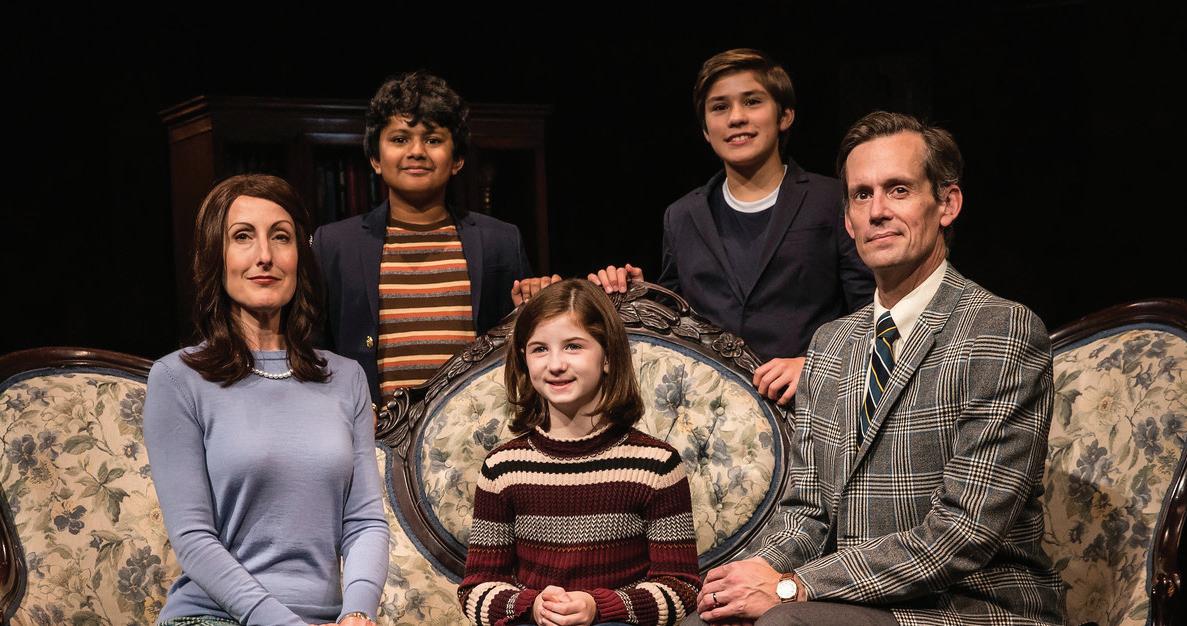
While the IACA plays a significant role in supporting and uplifting artists and art organizations in the state, it is clear there is

still a need for more funding. Chicago artist Kristin Abhalter Smith received a $2,100 artist project grant from the IACA in 2018. The funds helped pay for materials and performers for an installation at the gallery Ignition Projects. The project, called “Antecedent,” involved the creation of inflatable sculptures, an ongoing series of Smith’s, that resemble the “air dancers” often seen outside the opening of a new business.
“Obviously it would be nice if there were more funds available,” Smith says. “While it’s helpful to get $1,000 or $1,500 to work on something, it’s still not going to come close to covering all of the expenses that you’re going to have as an artist, in terms of infrastructure.
And it’s also being able to pay other people. It seems like they’re putting gestures forward to try to give, to have some kind of system in place to support artists, but I think that more attention needs to be paid to what the actual livelihoods of artists are, and how that can be supported fundamentally on an economic basis.”



According to data from the National As-


sembly of State Arts Agencies, art and cultural production accounted for 224,102 jobs in Illinois in 2017, and generated more than $30 billion for the state’s economy. A report from the NEA shows that at least one-third of artists are self-employed, compared to 9 percent of all U.S. workers, which typically means they make lower wages than regular full-time workers and have little or no benefits. From 2010 to 2014, self-employed artists “earned an annual median income of just under $42,000, about $14,000 less on average than earned by full-year/full-time artists on payroll.”
Soto agrees that funding often falls short of costs, adding that the financial challenges of making art and supporting yourself as an artist don’t necessarily lessen as one’s career progresses. “Reaching a mid-career level has put me in a more visible position for institutions to notice my work,” she writes over e-mail. “Opportunities for national presence are greater when you have more experience. This also means that the financial challenges are greater as well. It is not well understood
or supported in general because it is not fresh news. The mid-career status comes with the assumption that it has been supported already.”







While the IACA has a limited amount of funding to give, and could arguably do a better job of disbursing those funds, it undoubtedly plays an outsized role for the arts in Illinois. Art is always valuable, not only for the jobs it creates and the economic benefits it brings to the state, but for its potential to transform lives, to help us envision a di erent future. And, as the coronavirus pandemic has shown us, music, movies, and books are often the first thing we turn to in dark times.
Soto sees art as a reflection of our cultural values and an opportunity to find connection in isolated times. “Now more than ever, art has become the form of communication that allows us to connect, discern from the overlooked and advocate for others,” she writes.
“Art is in everything and is everywhere. We need art.” v

 @booksnotboys
@booksnotboys
MAY 7, 2020 - CHICAGO READER 15 ARTS & CULTURE
Artist Edra Soto was able to create “GRAFT” thanks in part to a IACA fellowship
COURTESY EDRA SOTO (out of 4) “A CHICAGO FUN HOME TO SAVOR… YOU DO NOT WANT TO MISS THIS.” FUN HOME STREAMING ONLINE MAY 12-24, 2020 | TICKETS just $20! MUSIC BY JEANINE TESORI BOOK & LYRICS BY LISA KRON DIRECTED BY GARY GRIFFIN BASED ON THE GRAPHIC NOVEL BY ALISON BECHDEL
Stop the spread in style
Local
By BRIANNA WELLEN
Fashion, for many, is all about fantasy.
In normal circumstances, this week we would have spent several days picking apart the outrageous outfits of celebrities attending the Met Gala (the theme would have been About Time: Fashion and Duration). But instead, at least here in Illinois, we’re left to contemplate a future with a mandatory, less-than-fantastical item: the face mask.
“The face mask is the it accessory of 2020,” says Gaudy God designer Matt Kasin. “We’ve

seen entertainers wearing and designers showing face coverings over the past year. This is an example of a style/trend becoming a necessity.”
As of May 1, Illinoisians are required to wear a face covering in any place where they might not be able to maintain a six-foot distance. While the mandate certainly brings to mind a dystopian landscape filled with surgical masks, to local designers it brings an opportunity to create something new, support
themselves and others out of work, and stop the spread of COVID-19.
Barrel Maker Printing first jumped on selling T-shirts featuring images of Chicago icons like the Tamale Man, Quimby’s, and Thalia Hall to raise money for local small businesses—they’ve raised more than $70,000 to date. It was an easy transition from there to include masks in those e orts, using the same screen-printing style the company is known for. Director of operations Justin Moore says that they’ve already started experimenting with using materials that would be more breathable and stylish than the typical T-shirt materials they work with. In the coming weeks they’ll be producing masks made from bamboo, hemp, and other soft, natural fibers.
Roger Rodriguez from Jugrnaut is also getting creative with materials, in part because fabric stores have closed. “I found some old vintage polo bear fabrics and coffee sacks that were given to me by Dark Matter Co ee,” he says. “I had them dyed by a good friend Saint Millie, and I created my fi rst batch of masks with those materials.” He envisions a future where people have a di erent mask for each day of the week or each outfi t, and he wanted to get a jump on creating “dope” masks for people who want to stand out.
One look at Instagram, and it seems there are already masks for every style. Kasin, @gaudygod, creates masks out of a rainbow light-reflective fabric, initially designed with a pair of matching shorts. Chelsea Hood, @chelshood, offers 14 different prints to choose from and also specializes in masks for children. Michaela Vargas Caro, @bricomode, has drawn inspiration from textiles used in her Bolivian textiles.
“Having this material that I intrinsically relate to through my upbringing and can now use stylistically to address our current protective needs provides a sense of comfort through self-expression, my cultural identity, and style to connect with others in various communities, especially during social distancing,” Vargas Caro says.
Even as designers are thinking more and more about how these masks look, the function needs to be prioritized. Hood knows this firsthand—it was her brush with COVID-19 in the early weeks of March that inspired her to

start creating masks. While she was unable to get tested, Hood experienced textbook symptoms and says she was the sickest she has ever been for two weeks.
“After being face-to-face with it, I knew how important it was to take the virus seriously,” Hood says. “Aesthetically, deep down, I don’t give a shit what they look like. The masks I’m making have a 3M Filtrete viral air filter in them because at the end of the day, I want to keep my loved ones, and the people they love, healthy.”
Hood is also using this opportunity to support others. She’s hiring out-of-work comedians to make deliveries instead of relying on the now overloaded post o ce, accepting donations to send supplies to the team of nurses with Krucial Sta ng in New York popup COVID hospitals, and donating masks to the Daybreak Shelter in Joliet.
All these designers agree that face masks aren’t disappearing anytime soon. And while major fashion houses have already started jumping on the trend, there are plenty of local artists who are offering affordable, unique styles that are brightening up dark times.
“Humans usually have a way of turning things that might seem dreadful into something novel that subverts that sentiment,” Vargas Caro says. “I think there is something exciting to look out for down the line in how this particular health/fashion accessory integrates into the fashion industry and our culture.” v
@BriannaWellen
16 CHICAGO READER - MAY 7, 2020 ll
FASHION
designers are creating fashion face masks to keep you safe.
ARTS & CULTURE
Barrel Maker Printing masks
COURTESY BARREL MAKER
PRINTING
The Gaudy God mask COURTESY MATT KASIN
Jump someone’s bones, safely
BY S. NICOLE LANE
On April 13, LGBTQ health center Howard Brown launched its free safe-sex kit delivery program to support the stay-athome order and to facilitate safe sex in your home. The program encourages people to social distance, and that includes not traveling to their clinic spaces. By providing the kits

across the city (and the country) folks won’t have to purchase items for intercourse. Have no fear—Howard Brown is here to make sure all of your stay-at-home sex needs are met.
Regular-sized, gold foil, latex-free, and receptive-partner condoms, plus water-, oil-, and silicone-based lube and at-home
HIV screenings are all available in the kits. People can choose what they want to be included when they place their free order. For folks checking the box for HIV tests, a health educator from Howard Brown will call and walk them through the test. The kit for HIV testing includes sterile water, cotton balls, Band-Aids, and alcohol swabs. The clinic also started o ering pregnancy tests in their kit this week.
Chad Hendry, the clinic’s director of sexual and reproductive health, says right now the clinic is looking into how they will be able to include other risk-reduction materials in their kits. “For instance, safer injection supplies, minus syringes, and things like that. We already o ered those things in our walkin clinics, but we just haven’t quite got there to mailing them out yet, but we’re working on it.”
When I talked to Hendry on Friday morning, he told me that the night before, Howard Brown had 150 requests for condoms and lube and 97 requests for HIV screening kits. “It’s not just folks in Chicago who are requesting,” says Hendry. “We actually have eight di erent states and then also the territory of Puerto Rico that we’ve sent kits to so far. And our goal is to disseminate them to anyone that we can within the U.S. while supplies last.”
The clinic is still open for treating patients but has changed their hours slightly to 10 AM–5 PM. “We’ve had some service modifications in terms of what clinic spaces are open,” Hendry says. “We’ve closed a few of the satellite clinics, but the majority of our spaces are open. We did reduce our sexual health walk-in clinics to one on the north side, and then one on the south side. We normally have three.”
Chicago has been ordered to wear masks in public starting May 1. Howard Brown employees have been wearing masks, along with all of the normal personal protective equipment, in the o ce for a month. Temperature checks and social distancing have also been implemented in the clinic for employees. “We’re also thinking about, how do we keep ourselves mentally safe, right? Because this is a pretty stressful time,” Hendry says. “And so Howard Brown’s implemented a bunch of self-care days and all of them are Zoombased.” Through generous donors, the clinic
has been able to supply its frontline staff with lunch every day.
Tips on sex during a quarantine? Hendry says they have been “encouraging everyone to socially distance themselves and minimize contact outside of their home.” He says that sex is important to people, so sex is still going to happen. But “have sex with people close to you” and remember that “you are your safest sex partner.” For folks dating online, Hendry recommends having a video or virtual meetup as an IRL alternative.
Tino Dietrich, CEO of sex toy company Ella Paradis, tells me in an e-mail that “unless you are quarantining with your significant other, it is advised to practice self-love with masturbation in lieu of engaging with new partners or exposing yourself to individuals outside your bubble” during the pandemic. The company recently conducted a study that looked at pleasure during a pandemic. They found that the states with the highest sex drives are in California, New York, Texas, Florida, and Illinois, and folks buying the most sex toys live in New York City, Los Angeles, Chicago, Houston, and Dallas.
Dietrich also says that this is a time to explore with cybersex as we see a shift in societal norms. “Why not embrace it?!” he says.
Ella Paradis carries toys like We-Vibe Chorus, which is a Bluetooth- and app-connected toy for long-distance lovers. “It’s a much safer option in these uncertain times,” he says.
“Think about ways that COVID is transmitted, which is through liquid particles,” says Hendry. “Try to avoid kissing because it can easily transmit, and then avoid certain types of oral sex including rimming because we know that COVID-19 has been found in fecal matter.”
Dietrich says that the pandemic has taught his company that it’s possible to break the stigma on the connection between masturbation, sexual pleasure, and overall mental health, happiness, and confidence. “It’s truly a new era for all of us in the sexual health and wellness industry,” he says.
Overall, pay attention to your health and your partner’s health. “So if you aren’t feeling well, do not have sex,” says Hendry. “Take the usual steps that you would use to prevent HIV, STIs, as well as unplanned pregnancy. That can look like a lot of things.” v
Questions? Call Howard Brown’s COVID-19 hotline (773-388-1600).
MAY 7, 2020 - CHICAGO READER 17 ARTS & CULTURE
HEALTH
Howard Brown delivers free sex kits right to your door.
@snicolelane
Condoms and lube and STI tests, oh my! COURTESY HOWARD BROWN
ACTIVISM
Masked crusaders
Uprising Theater joins a nationwide effort for PPE.
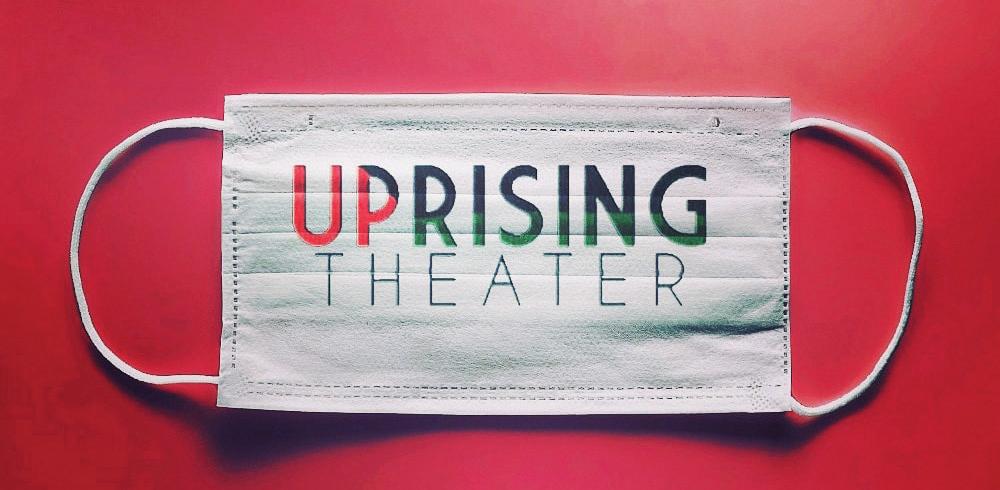 By CATEY SULLIVAN
By CATEY SULLIVAN
Since founding Uprising Theater Company in 2014, Iymen Chehade and Maren Rosenberg have worked to tell stories of marginalized communities, especially those of Palestinians and Palestinian Americans. The specificity of their focus—including the first-ever reading of Chicago playwright Rohina Malik’s Layla in Lala earlier this year—makes them singular. But like every other theater in Chicago, Uprising has been dark for over a month, one of countless casualties of COVID-19.
But the uninvited hiatus hasn’t stopped Chehade and Rosenberg from sticking to their mission. In collaboration with a triumvirate of femme-led, all-volunteer start-ups, Uprising is working to put face coverings and other personal protective equipment in the hands of healthcare workers and other hard-hit communities.
“We’ve refocused our energy to try and empower marginalized communities in di erent ways,” Rosenberg said of the wide-reaching Mask-er-Aid project. “We know masks are unavailable to many people. They can be expensive. They can be hard to find. We wanted to do something about that.”
With so many of their artist colleagues abruptly out of work, Chehade and Rosenberg brainstormed the possibility of a New Deal–type arrangement: put unemployed theater practitioners to work making PPE.
They weren’t alone in the notion. In tandem with the Chicago-based Artists’ Resource Mobilization (ARM), California’s Personal Protection Equipment for Healthcare Providers (PPEforHCP), and ProvidePPE (which operates out of Chicago, Detroit, and Oakland), Uprising has pivoted from drama to disease prevention, from fund-raising for performance to fund-raising for PPE.
“My idea was to put costume designers to work sewing masks,” said ARM founder and costume designer Kristen Ahern. Since designers are used to creating “all types of outlandish costumes or props,” the construction challenges of creating PPE seemed doable, she added.
Still, as with nascent efforts at PPEforHCP and ProvidePPE, ARM faced a formidable early challenge. It can take weeks—sometimes
months—to get 501c3 status, the o cial nonprofit imprimatur that makes donations tax-deductible. While the Ka aesque process labors on (“It’s a lot of paperwork that really can take you away from what you’re actually trying to do,” said ProvidePPE founder Meghan Larson), aspiring nonprofits often use “fiscal sponsors” as a workaround.
ARM secured a fiscal sponsor in the Apparel Industry Foundation Inc., which also kicked in a $1,000 seed grant. Uprising quickly signed on as fiscal sponsor for ProvidePPE and PPEforHCP. “We’re kind of like a middleman,” Rosenberg said. “Since we’ve had our nonprofit status for years, we can take donations [on behalf of PPEforHCP and ProvidePPE] that let the donors get the tax write-o .”
For ARM, donations have so far paid about 20 theater artists a piece rate between $2.50 and $3.50 per mask, depending on the design. “Our target is to make sure people are making between $15 and $20 an hour,” said Ahern. They’ve distributed 1,500 items so far to NorthShore University Healthcare Systems, Advocate Aurora Healthcare, and various veteran and eldercare groups.
“I joke with my partner that I got a dry run for COVID when he was diagnosed with cancer a few years ago,” Ahern added. “I’ve always been one to respond to a crisis with a spreadsheet, but I really had to learn to respond calmly, rapidly, and rationally to a traumatic and emotional situation. It’s like, ‘OK, what do I need to know, how do I need to organize the information, and what are the steps I need to take?’”
PPEforHCP founder Sophia Boettcher is similarly driven to provide protection to healthcare workers. The data scientist has spent her professional career studying rare diseases, inspired by her own diagnosis with scleroderma, an autoimmune disease that can cause skin to harden and scar tissue to form on internal organs. “I’ve always been interested in rare diseases and advocating for people that have them, in part because I have one. So when COVID first surfaced, I followed it closely,” she said.
When Boettcher learned that COVID-19 had left one Washington hospital so short on PPE
that health-care professionals were using craft supplies to make masks, she posted a query about the need for PPE on social media. She quickly learned it was great. “I made some phone calls, and basically bought all the masks I could find in the (San Francisco) Bay area. Then I shipped them out,” she said.
As the weeks went on, Boettcher was inundated with anecdotes from the front lines: disposable masks being reused time and again, plastic bags serving as gowns, one-time-use gloves being rinsed out and reused. Larson and Ahern were working on parallel tracks, fielding similar requests for PPE.
With an initial boost in fabric funding from ARM, PPEforHCP has donated more than 20,000 face masks to health-care providers across the country, including 1,400 to Chicago’s Iman Medical Center, Boettcher said. PPEforHCP has another 15,000 masks ready to ship. They’ve also acquired 400 isolation suits and 2,600 bottles of hand sanitizer. “I’m literally looking at gallons of hand sanitizer right now,” Boettcher said from her home in Santa Clara County. In late April, PPEforHCP sent 100 face shields (clear, full-face coverings) to the U.S. Veterans Association. In February, the organization filed a patent for a flat anti-tamper, latex-free, FDA- and CDC-compliant medical face mask design that provides the protection of the increasingly impossible-to-procure N95 masks.
Since December, Boettcher has been working with a family-owned factory in Guangdong, China. “We’re hoping to figure out a way to replicate the manufacturing process in the U.S.,” she said. “It’s tough, getting things out of China. I feel like customs regulations between here and China change every day. The labels have to be so exact. We’ve tried to let everyone in the distribution chain—including customs officials—know what we’re doing. We’re just like ‘please don’t stop us.’”
So far, Boettcher says, most of PPEforHCP’s work has been self-funded, with the exception of fabric donations from ARM and a “tiny”
GoFundMe.
“We’re all just normal people who have made really big sacrifices to fund this,” she said of her cohorts at PPEforHCP. “I put off my grad school plans. That freed up some money. I’m not renewing my car lease because that’s no longer a priority. Obviously funding this way isn’t sustainable. And it gets a little depressing when you’re paying $1,200 in shipping costs every time you leave the house, although UPS does give us a 10 percent discount.”
During normal times, ProvidePPE founder Larson oversees Adistry, the start-up she created to package and sell ads to the cannabis industry. Now, she’s working with ARM, Uprising, and PPEforHCP as well as overseeing ProvidePPE. In addition to providing PPE on request to institutions, ranging from pharmacies to grocery stores, ProvidePPE runs an Etsy store where the general public can buy face coverings—some of them made from upcycled or recycled costume materials.
“We’re all interconnected, like one degree of separation,” she said of the groups. “We’re all facing the same issues. The information is fluid, the money is tight. Usually I’m all about making money, I mean, I’m the founder of a start-up. But now? Now we need to deal with this,” she said.
Uprising hopes to produce a staged reading at Prop this fall. But for now, Rosenberg and Chehade have their sights squarely on battling COVID. Virtual meetings among ProvidePPE, PPEforHCW, ARM, and Uprising take place weekly as Larson, Boettcher, Ahern, Rosenberg, and Chehade work through the labyrinthine webs of sourcing and supply chains.
“The Palestinian community in Chicago has a history of being very community-outreach oriented,” said Chehade. “We feel very comfortable going to these groups and saying, ‘Hey, we have boots on the ground here. We can get supplies to people who need them.’” v
@CateySullivan
18 CHICAGO READER - MAY 7, 2020 ll
COVID-19
Uprising has pivoted from drama to disease prevention. COURTESY UPRISING THEATER
THEATER
PERFORMANCE HISTORY
Dancing under quarantine
The Chicago Dance History Project collects art of the pandemic.
By IRENE HSIAO
Founded five years ago and recipient of a 2019 Ruth Page Award, the Chicago Dance History Project has steadily built a digital archive of original and collected research documenting theatrical dance in Chicago, hosted and produced numerous public events exploring topics in Chicago dance, and amassed a large collection of performance footage and other historical materials. “We’ve been working with a sense of urgency to capture as many dance histories of Chicago as we can, while we still can, through recorded oral history interviews primarily. So far we’ve interviewed 131 people,” says CDHP executive and artistic director Jenai Cutcher. “Now that it isn’t quite

possible in the same way, I’m working with the same urgency to make our materials as accessible as possible.”
These materials reflect the range of CDHP’s broad investment in the Chicago dance community, with interviews with Chicago dancers and dancemakers from a variety of genres, as well as administrators, educators, photographers, philanthropists, and producers participating in a field defined by generous parameters. (“What is theatrical in an age when we can’t gather in a theater? My barometer is whether or not an audience is required or intended,” says Cutcher.)
In addition to the interviews, each doc-
umented with a two-camera shoot and supplemented with photographs and other materials, CDHP’s collection includes scans of programs, letters, choreographic notes, manuscripts, and more, including over 700 hours of performance footage and 60,000 digitized files. “Indexing, cataloguing, assigning metadata, file management—the amount of work that goes into processing materials is astounding,” says Cutcher. “For over two years, we’ve been publishing excerpted clips of our interviews on our website, Vimeo channel, and social media. That’s the bulk of what’s public facing, but anyone can request to see a full oral history interview, read a transcript, or watch an event if they missed it.”
These events, produced in partnership with a variety of organizations, investigate topics in Chicago dance history through panel discussions, exhibitions, and lecture-demonstrations. Numbering 35 in total, the events cover such subjects as founding and sustaining a dance company (with the artistic directors of Ensemble Español, Joel Hall Dancers, and Natya Dance Theatre, all founded in the 1970s),
the history of Chicago tap dance, prominent women in Chicago dance, and more.
Though little in living Chicago history can be compared to our present moment, Cutcher notes that resilience and creativity are persistent themes in CDHP interviews. “Finding freedom within limitations is something artists do, and stories like that come to me all the time. Now is no di erent. Artists learn how to be resourceful. Think of the original Links Hall. It was right by the el tracks, so everybody paused when the trains went by. There was no backstage or wing spaces so they used the closet doors. The collaborative spirit of the Chicago dance community is something else I think about. Folks have always worked collectively to address the needs of the community and to take care of each other—a good example of that is the inception of Dance for Life”—the annual concert founded in 1991 by Keith Elliott, Todd Kiech, Harriet Ross, Danny Kopelson, and Gail Kalver that raises funds for dancers living with HIV.
To capture history as it unfolds, the CDHP has begun collecting materials for a Dancing Under Quarantine collection. “If this [pandemic] had happened 100 years ago, we wouldn’t be able to shift our connections technologically. Now we’re able to maintain a sense of community digitally,” notes Cutcher. “We’re hoping to collect any sort of material that reflects the reality of the situation at this time, whether a dance in your living room, written thoughts, a video message, a recorded Zoom class, anything that you are creating or expressing that serves as bearing witness to this time we’re all in together. People are finding all kinds of ways to remain active, connected, and creative. We’re not selecting, we’re not curating. If you submit to the collection, it’s in—it’s a community archive.” To submit, dancers and dancemakers can send materials and contextual information to media@chicagodancehistory.org with the subject heading “Dancing Under Quarantine.”
“CDHP has been and was always meant to be a resource for everyone,” says Cutcher. “Now more than ever, because we can’t escape to a theater to see live dance, I hope people might enjoy combing through CDHP’s archive and learning about the companies they can’t see live right now or explore any of the rich and vast history of dance in Chicago.” v
@IreneCHsiao
MAY 7, 2020 - CHICAGO READER 19 THEATER
Shirley Mordine CHUCK OSGOOD
Support your local movie theater workers
The
 By NINA LI COOMES
By NINA LI COOMES
Perhaps you, like me, have walked past a closed movie theater in the last few days and wondered about the people who used to work inside. Whether it’s the person who takes your tickets, or shovels butter-glossed popcorn into a paper bucket, or patiently clears away the garbage to ensure a clean next showing, movie theaters are run by a veritable constellation of hourly workers. But the cur-
rent shelter-in-place order makes such workers’ livelihoods precarious; as cinemas are considered nonessential businesses, Chicago’s beloved movie theaters have been shuttered. That’s why the Chicago Cinema Workers Fund was started as a fundraising effort directed at alleviating the financial hardships of the industry’s hourly sta .
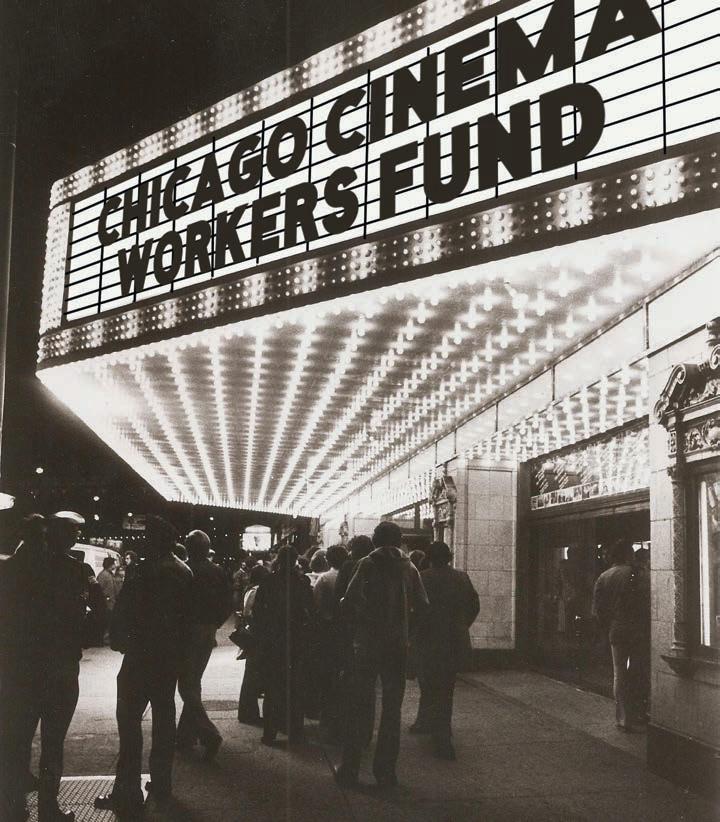
After seeing how quickly the New York cin-
ema community responded to the shutdowns by creating a mutual aid fund, Nightingale Cinema founder Christy LeMaster says she started to reach out to her colleagues in Chicago about starting a similar e ort. “Cinema runs on really thin margins. All of us in the industry understood there would be severe consequences to this kind of shutdown,” she says. “After two or three weeks, we started to see widespread need. Lots of cinema workers were being laid o .”
LeMaster then teamed up with Michael Metzger (curator at the Block Museum), Raul Benitez (lead programmer at Comfort Station and Full Spectrum Features, a much-needed financial sponsor), Yuki Sakamoto Solomon (coordinator at the Chicago International Film Festival), and others, creating the beginnings of an extensive network to reach out to cinema workers in need.
Not only does the fund seek to uplift cinema workers; LeMaster says that it is also about keeping Chicago’s cinema ecosystem vibrant and healthy for the hopeful future. “I want to live in a city where I can see a big blockbuster that’s going to be in every major cinema in the nation on the same weekend and I want to go to small hard-to-find art house movies,” she says. “That whole thing is one economic system and the people who are doing the hourly wage work for those cinemas are the ones that need our protection and support.”
Metzger adds, “On the application form [for the fund], there’s a space for people to talk about the hardship they’re experiencing as well as to write what working at a movie theater means to them. This was an eye opener— both in just how much people are struggling but also in how much pride people take in their job and the joy they have in working together around cinema.” The fund is essentially a way to show solidarity, and what Metzger calls “a first manifestation” for understanding how we as a city can come together to solidify our support for those whose livelihoods, health, and security are being threatened in this moment.
As of May 2, 103 people have applied for aid, their home theaters ranging from more corporate cinemas like AMC to smaller local ones like the New 400 in Rogers Park. While applications for aid are now closed, fundraising continues with the goal of raising $25,000—that gives each applicant at least a $300 payout. To support the Chicago Cinema Workers Fund or find more information, you can visit chicagocinemaworkers.com or e-mail chicagocinemaworkersfund@gmail.com. v

20 CHICAGO READER - MAY 7, 2020 ll FILM
FUNDRAISER
Chicago Cinema Workers Fund raises money for the folks who run the box offices, concessions stands, and more.
in partnership with to add your event to TIXREADER.COM, email mroeder@chicagoreader.com MAY 9 Porch Pounders cocktail class @ Online, Make & MuddleSAT MAY 16 Summer Slushies: Frozen boozy slushies @ Online, Make & Muddle SAT MAY 23 Tiki Talk @ Online, Make & MuddleSAT JUNE 6 Naperville Soulfest 2020 @ Naperville SettlementSAT MAY 16 Sophia Lucia’s Freak Show Cabaret (EVENT REPEATS WEEKLY) @ OnlineSAT MAY 21 Changing Worlds Annual Benefit 2020 @ Online, Changing Worlds THU
NOW PLAYING
R Beastie Boys Story
As Beastie Boys Story opens in a live theater setting it begs the question of whether we’re in for little more than a hip-hop TED Talk, but it’s soon clear that the forum is more suitable for the group to tell their tale than the standard talking-head-filled music doc. On stage, the trio’s surviving members Ad Rock and Mike D are free to play off of each other and the energy from the crowd—it’s certainly not a Beastie Boys concert, but it’s pretty fun. The film centers on the Beastie Boys’s transformation from teenage punks to hip-hop pioneers, and their heyday as international crossover artists and festival darlings, but for all their hijinks, their story is as much about their evolution as artists as it is about their commercial success. It’s not the deepest dive, but their anecdotes, archival clips, and especially their celebration of cofounder Adam Yauch, who passed away in 2012, should engage and upli longtime fans and newbies alike.
—JAMIE LUDWIG 120 min. Apple TV+
R A Good Woman is Hard to Find
A Good Woman Is Hard to Find is a slow burn with an ending that’s worth the wait. Sarah (Sarah Bolger), the titular woman, lives a bleak life. Her husband was recently murdered in front of her son, rendering her son mute and leaving her to raise two children on her own. Her tragedy isn’t free of the standard trials of womanhood either. From the pervert at the grocery store who harasses her regularly to the criminal that forces his way into her house repeatedly and the male police officers who imply she enjoys this behavior, Sarah’s mistreatment by men rings true. It’s the compromised safety of her children, though, that snaps her out of submission and treats viewers to a powerful transformation
thanks to Bolger’s multidimensional performance. With its subtle and suspenseful story, and Matthew Pusti’s momentum-building score, you’ll likely dig this if you dug Drive —BECCA JAMES 97 min. 5/8-5/21, Facets


Virtual Cinema
R The Half of It
Fresh, funny and poignant, Alice Wu’s new film is both a touching coming-of-age story and a lighthearted romantic comedy. Leah Lewis plays a quiet, smart, Asian American high school student living in a small town in the Pacific Northwest. Her everyday consists of biking to school while ignoring her peers’ jeering, writing English papers for pay for her slacker classmates, and eating dinner in front of the television while watching old movies with her father. This routine is upended when a shy football player (Daniel Diemer) asks her not to write a school paper but a love letter, directed at the most beautiful girl in school (Alexxis Lemire). Begrudgingly, she agrees, and as letters are penned, a love triangle unfolds. At once sparklingly witty and tender, Wu delivers a moving portrait of sexual identity, friendship, and family, showing the audience a generous array of all the forms love can take. —NINA LI COOMES 104 min. Netflix

R Invisible Life
In the first scene of Invisible Life, two sisters, as close as any could be, stumble through a Rio de Janeiro forest, searching and calling for each other. Sadly, this will not be the last time that Guida (Julia Stockler) and Eurídice (Carol Duarte) find themselves so close and yet so far away. The rest of the film follows the two over decades as they struggle to pave their own paths—for Guida, falling in love, and for Eurídice, being a musician—and are eventually separated due to a ter-
MAY 7, 2020 - CHICAGO READER 21 FILM The Half
of It
Get showtimes and see reviews of everything playing this week at chicagoreader.com/movies R READER RECOMMENDED b ALL AGES N NEW F
FILM
rible lie. Stockler and Duarte are startlingly convincing as siblings, fluctuating between intense affection and petty bickering. Set in 1950s Brazil, both girls live in a world where much of their lives is decided for them by men, like their strict father (played sympathetically by António Fonseca). Both women fight against this in their adult lives: Guida searches for love in relationships that appear doomed from the start while Eurídice marries a man who doesn’t support her ambitions. Karim Aïnouz’s Invisible Life is a film that’s not for the faint at heart, but it’s worth every minute. —NOËLLE D. LILLEY 125 min. Amazon Prime
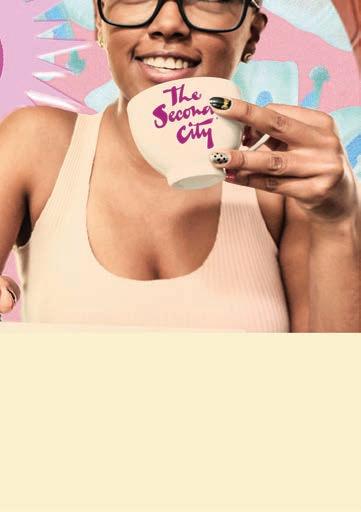

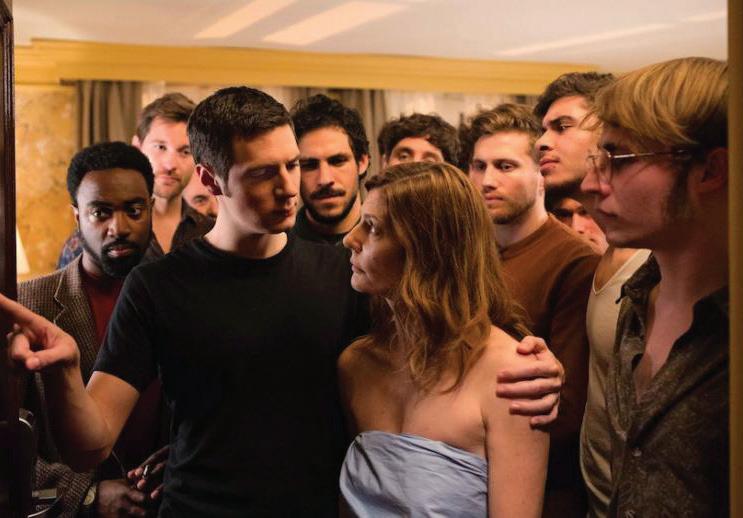
R On a Magical Night
In the press notes for this blithe comic fantasy, French writer-director Christophe Honoré (Love Songs, Sorry Angel) remarks that he chanced upon realizing it a er pulling back from an “overly respectable project”; he later states that he’d long wanted “to shoot a character thinking.” That for Honoré the two modes— deliberately light, yet still ruminative—go hand in hand is indicative of the discernible intelligence he injects into even his most insouciant fare. Chiara Mastroianni stars as Maria, a middle-aged professor who’s dallying with a student; her husband of two decades, Richard (Benjamin Biolay), learns about her indiscretion, which leads both spouses to question their relationship. Maria goes to stay at a hotel across the street, where she’s visited by people from the past, specifically Richard as a young man (Vincent Lacoste), Richard’s former lover Irène (Camille Cottin), and several other men with whom Maria has had affairs. It’s a pragmatic sort of magical
realism, enchanting in its aim but weighted—albeit not too heavily—by Honoré’s cerebral interjections. Honoré notes that he was inspired by Leo McCarey’s The Awful Truth, with Mastroianni intended to be a Cary Grant–like figure; this is also the first film he shot in a studio. The result is something akin to Hollywood romantic comedies from the 1930s, at once perceptive and entertaining. In French with English subtitles. —KATHLEEN SACHS 86 min. 5/8-5/14, Gene Siskel Film Center
From Your Sofa


R A Secret Love



It’s remarkable how easy it is to become completely invested in the love and lives of Terry Donahue and Pat Heschel. A Secret Love gets its name not just from the Doris Day song that plays during the title sequence, but from the fact that Donahue and Heschel kept their relationship a secret for almost the entire seven decades that they spent together. Director Chris Bolan—also the pair’s great-nephew—shares their story and the cultural context surrounding it, making Donahue and Heschel the protagonists in a winding narrative that goes so much deeper than two people falling in love. Only briefly are there interviews with activists and experts, and the documentary could certainly have benefited from including more. People like Yvonne Zipter from the University of Chicago Press, activist Marge Summit, and even our own Reader publisher Tracy Baim spoke to offer context about the criminalization of gays and lesbians. However, even more than LGBTQ history, A Secret Love is about growing old, and every wonderful and heartbreaking thing that happens when we do.
ALLEN 81 min.



22 CHICAGO READER - MAY 7, 2020 ll
—TARYN
Netflix v continued from 25 On a Magical Night COmedy from Your cOUCh Connect, Laugh, Create with People Around the World Through Virtual Classes! IMPROV • STAND-UP • WRITING • & MORE! SECONDCITYONLINE.COM • 312-337-3992
Fire-Toolz captures the many colors of the rainbow bridge
By NOAH BERLATSKY
MUSIC
My family’s beloved 16-year-old Siamese cat, Webley, died in my arms last year. He’d been a sleek fat kitty before he got ill, but he’d lost weight and lost weight till he was little more than a bedraggled shadow. At the end he could barely lift his head, and then the vet gave
him the shot and he couldn’t lift his head at all. I was scratching his ears as I’d so often done before, and suddenly they dropped, and whatever I was petting wasn’t Webley anymore. It’s one of the worst memories of my life.
I’ve been thinking about Webley a lot
while listening to the new Fire-Toolz album, Rainbow Bridge , which comes out May 8 on local label Hausu Mountain. Angel Marcloid, a Chicago musician who records as FireToolz (as well as under several other names), made Rainbow Bridge about her 16-year-old cat, Breakfast, also a Siamese, who died in December 2018. The album is an idiosyncratic collage of guttural death-metal roars, electronic bleeps, and vaporwave ambience. Bleak, sweet, and quietly unflinching, it slides back and forth between two emotional poles: one boils with rage and grief, while the other is steeped in a comforting lyricism as gentle as a cat rubbing its chin against your hand. “It’s been a while, but I think about her every day,” Marcloid says. “I still have moments where I feel her close and I just cry a whole bunch. I’ve got her ashes two feet from me right now. I have a tattoo of her on my chest. So yeah, I’m happy to honor her in my music.”

late-night exposure to Morbid Angel’s 1993 video for “Rapture” via MTV’s Headbangers Ball , and soon she was also listening to jazz and electronica. She performed in several short-lived bands, and in the late 2000s she launched her own label, also called Rainbow Bridge. Through it Marcloid released cassettes and CDs by other musicians, as well as a blizzard of her own music under various names—including ambient acoustic music as the Human Excuse, punky dream pop with the trio Shadow Government, and electroacoustic noise as Water Bullet.
FIRE-TOOLZ, MACHINE GIRL, QUICKSAILS Thu 5/7, 8 PM, Hideout Online, twitch.tv/ hideoutchicago, $10 suggested tip, all ages
Marcloid came to Chicago in 2012 to move in with a girlfriend, who owned several cats and had just adopted Breakfast. Like most Siamese, Marcloid says, Breakfast “has always been a little strange.” She was neurotic and disliked the other cats, and she never really warmed up to Marcloid’s partner. In fact she only had one clear favorite. “She took to me immediately,” Marcloid says, “and always wanted to be on me and just wanted to spend all her time with me.” When Marcloid and her partner split up, there was no question who Breakfast would go with. The kitty ended up spending most of her life in Marcloid’s bedroom to avoid other cats. “The rest of the house was just scary for her. There were too many other cat smells,” Marcloid says.
From as early as she can remember, Marcloid says, music made her feel things “that are just so abstract and visceral and hard to put your finger on.” She was born near Annapolis in 1984 to a music-loving family; her parents constantly played CDs of hair metal, the Beatles, and her all-time favorite band, Rush. Marcloid started making little drum sets out of pots and pans almost as soon as she could walk.
Her first public performance was when she was seven. Her parents knew a local bar band, and she sat in with them to play drums on a cover of the Black Crowes’ “Hard to Handle.”
“This is a smoky bar, women showing their boobs and stu —it was not an environment for kids!” Marcloid says. “But I sat down with the drum kit and we played the songs, and they were just amazed. They were looking back at me while we were playing, like, ‘Holy shit! This kid’s actually keeping time!’ I’ll never forget walking off that stage, and all these drunk, smelly adults cheering me on, and a couple of people just gave me money. ‘You’re awesome, kid! Here’s 20 dollars!’”
Marcloid soon taught herself to play guitar and bass too, and her musical interests expanded. As a child she had a formative
“On the one hand, it may seem weird or maybe even borderline cruel to keep a cat in a single bedroom for their entire lives. But that’s what she wanted; she was happy.”
Marcloid has featured Breakfast in tracks throughout her oeuvre. “Spirit Spit” from the 2017 album Drip Mental (Hausu Mountain), for example, is a short wordless suite in which Marcloid imagines the usually shy Breakfast grown adventurous enough to go exploring in the house during a storm. The track opens with Breakfast engaging in some Siamese vocalizing and squawking, with thunder in the background. The rest of the narrative unfolds through auditory cues. “She comes down to the basement and turns on her ancient computer, which ties into AOL,” Marcloid explains. “Then she puts on a Telepath CD, which is a vaporwave artist that I absolutely love. You can hear the CD drive opening, you can hear the Telepath song start. And then she types some stuff and is meowing. And then she turns o the computer and goes back upstairs.”
In 2018 Breakfast began to go into kidney failure. She was constantly peeing in Marcloid’s room, and she wasn’t eating. Eventually she was so uncomfortable and miserable
MAY 7. 2020 - CHICAGO READER 23
Angel Marcloid makes music under many names, but she calls Fire-Toolz “the top of the pyramid.”
MANDA
BOLING
Chicago experimentalist Angel Marcloid tries to contain the fractured emotional spectrum of loss with an album for her dead cat.
MUSIC
Marcloid had to euthanize her. “And that was just so fucking traumatic for me, and so emotional,” Marcloid says. “It really energized the search for truth and meaning that I had already begun years ago.”
Marcloid began making Rainbow Bridge during Breakfast’s illness. The title isn’t just a callback to her record label (which she folded around five years ago) but also a reference to contemporary folk mythology about a rainbow bridge that, in Marcloid’s words, “our pets either cross when they die to go to the other side, or they go there and they wait for us.” The cover art, by Marcloid and Jeremy Coubrough, shows a Siamese cat sitting in a green field with her back to the viewer, looking at the prismatic steps of a bridge that leads upward into a kind of bloated growth of exploding colors.
The chaos of different hues fits the FireToolz aesthetic. As Hausu Mountain cofounder Doug Kaplan puts it, “There’s just nobody else that sounds like this, and there will never be another. Each track goes a bil-
lion different places but has a strong sense of oneness.” Marcloid’s other projects often follow particular rules or fi t into particular genres; Mindspring Memories, for example, is mostly slowed-down and otherwise manipulated smooth-jazz samples. A recent album under the name Path to Lobster Believers is processed feedback improvisation. But with Fire-Toolz, Marcloid says, “Anything goes. It’s a no-rules catchall; everything reports to it. It’s the top of the pyramid.”
The violent shifts in tone and genre on a Fire-Toolz track often feel exuberant and playful. On Rainbow Bridge , though, they create splatters of emotion: nostalgia, confusion, loss, hope. The opening track, “Gnosis .•o°Ozing,” starts out as ranting death metal, with Marcloid screaming distorted, virtually indecipherable lyrics: “Arms wrapped in neon like a warning / A rainbow bridge unfurling / And now I lay listening to nothing / I feel my organs locking up.”

By the second verse, she’s superimposed smooth-jazz keyboard flourishes atop the noise, so that it sounds like the metal is bat-
tling easy listening, anger struggling with happier memories. “Layers in grief not unlike stages of passing / There are many / Not too many / Not so much.”
The video for the song “Rainbow ∞ Bridge,” created by Marcloid with Armpitrubber (aka Christine Janokowicz), provides an intense visual analogue for the music’s smeared palette. This song too starts with a death-metal feel, pairing double kick drum with Marcloid’s throat-tearing vocals. “Please don’t be mad that I cut your cord / Fear lodged in my gums / Pressing into my face with fi ngerlike force / Breakfast!” she yells, as images of the kitty strobe and dissolve into colors, lights, emojis, a door opening, SpongeBob screaming. Tinkly new-age keyboard ambience plays over purple clouds and the on-screen words “Heaven! They say I can sit and soak you up.”
A guitar solo fit for a classic-rock ballad cuts through the shifting landscape, and then the song briefly fades into ambience as Breakfast romps across the screen and dissolves. It’s a vision of a loved one disintegrating, perhaps into nothing, perhaps into memory or heaven, while pain and happiness alternate in spasms of glitches.
“Heaven has no location,” Marcloid howls near the end of the track. That’s a statement of spiritual hope; heaven is everywhere, Marcloid believes. “It’s not any particular place. It’s something that is all- encompassing,” she says. “I think that it’s everywhere and everything. It’s the flow of life.” You can hear that hope on tracks such as “[Mego] ^ Maitrī,” which is all gentle surging keyboards and pattering electronica, encouraging you to gently drift into an ether of soft fur and purring.
A heaven without location can also simply be a heaven that doesn’t exist, though, and that fear and doubt is also part of Rainbow Bridge . On the jittery “Microtubules,” a throbbing beat loops around and around as Marcloid asks, “Were you afraid of crossing?” It’s an unsettling question: of course she’d worry about a cat who never wanted to leave the bedroom going off on a long journey alone.
“When Breakfast was sick, anxiety was a huge, huge part of it,” Marcloid says. “And even after she passed, and I knew that there was nothing to be done, there was still so much anxiety. I became frustrated because I wanted to know where she was, if she was anywhere. I just want the truth. I don’t even
care what it is, even if the truth is we’re all just dead, and that when my body stops working, it’s completely over.”
Marcloid finished Rainbow Bridge months ago, and of course she didn’t know it would be released at a time when anxiety, uncertainty, fear, and isolation would be so pervasive. In the context of a pandemic, the album seems even more relevant, not just because of its grief but also because of its prescient reminder of the importance of pets: during the stay-at-home order, animal adoptions have broken records as humans turn to cats and dogs to keep them company, and keep them sane, in isolation.
Marcloid adopted another cat herself after Breakfast died, and she now has three. “It’s incredibly comforting to have them during a time like this,” she says. “They’re a solid rock for me to lean on. Especially lately, because they just don’t fi ght with themselves. They’re just such simpler creatures, and they’re so much more connected to reality than any human could possibly be because of how complex our lives are. When they’re in pain, they’ll react—they won’t like it, but they don’t conceptualize and theorize about it. They don’t get into this existential dread. They’re just in pain, and they just want the pain to go away. That’s all it is. It’s that simple. We are just hopeless cases in comparison.”
Marcloid’s music, for all its genre shifts and chaotic oddness, can also reach for that kind of simplicity of thought and emotion. The six-minute instrumental “Angel (of Deth)” is elegiac, oceanic Muzak—a soundtrack to play while the waves roll in, or while watching a kitty sleep. At its conclusion the track breaks up into electronic blips and warbles, as though the world were coming apart and something else were wavering into existence behind the static.
“It’s a mystery because we don’t know,” Marcloid says. “So I have to love and honor that mystery. I don’t even know what God is, or if God exists, but whatever it is, that’s what I love.” Marcloid’s tribute suggests that cats may know more about love than we do. They trust you even at the end, to help them die. Rainbow Bridge is not just a eulogy but an expression of hope that they’ll lend you a paw in turn when your time comes. It’s a comfort to think that when you start up those stairs, there will be a small someone to show you the way. v
24 CHICAGO READER - MAY 7. 2020 ll
@nberlat
Angel Marcloid and Jeremy Coubrough collaborated on the cover for Rainbow Bridge
continued from 23
Chicago rapper Joshua Virtue irreducibly defines pandemic life on Jackie’s House
Why? Records
EVER SINCE COVID-19 SEEPED into every detail of our everyday lives, I’ve struggled to articulate the mental gymnastics I go through just to remember to brush my teeth twice a day. Thank goodness for Chicago rapper Joshua Virtue, who does it for me on his new solo album, Jackie’s House (Why?). On “Fenti Face,” Virtue (aka Alex Singleton) captures the surreal mishmash of tension, anxiety, and confusion that passed through him as Illinois skidded toward its current state of limbo; his poised, serene performance collides with the distressing subject to give the song an emotional slipperiness that captures this moment’s specific feeling. Virtue wrote and recorded Jackie’s House during the first couple weeks of Governor Pritzker’s shelter-in-place order, and though he vents plenty of frustration and anger (at the way COVID-19 disproportionately harms the most vulnerable, and at the capitalists exploiting it to fill their co ers), he ultimately fuels this music with love. The album is an homage to his mother, the titular Jackie; Virtue has pledged to give her all proceeds from the Bandcamp-only release while she looks after his sister and grandmother in her Florida home (the Jackie’s House Bandcamp page also includes Venmo and Cash App handles for Virtue’s mom, in case folks want to give more).

Jackie’s House is an act of kindness—the joy Virtue expresses here can help people find ways to heal themselves during an ongoing tragedy—as well as a reminder of what can be lost. Virtue’s anger is likewise an act of empowerment: when Ruby Watson and Malci join him to tear into our corrupt political and economic systems on “12 Billion Wulong!,” they wield their serrated barbs on behalf of the people they love.
—LEOR GALIL
Big Silky, Big silky Vol. 1 Self-released psalmone.bandcamp.com/album/big-ilky-vol-1
Born from the ashes of Rapper Chicks, one of the city’s best and most slept-on rap groups of the past decade, Big Silky reintroduces two members of that crew, Psalm One and Angel Davanport. On their debut EP, Big Silky Vol. 1, written in tribute of former bandmate Henny B (she passed away in 2018, and she’s honored in the liner notes as “executive producer”), the duo deliver music that would’ve made their comrade proud: bold, vicious rhymes and a succession of slick, rat-a-tat rhythms that allude to classic hip-hop composition, courtesy of beat makers Optiks, Budah Tye, Benzilla, OnGaud, and Bionik. Psalm and Davanport are both accomplished solo artists, and they don’t hesitate to remind you of their lyrical and vocal dexterity—their cocksure cadences make them sound like rascally descendants of east-coast heavyweights Big Pun and Lil’ Kim. Big Silky is the sharpest presentation yet of their forces combined, and their cunning assessments of rap’s boys club, clout chasers, and players serve as reminders to always give praise where and when it’s due. After years of sharing the stage with each other in one project or another, they’ve been able to capture their live energy and chemistry in the studio on Big Silky Vol. 1. They revisit themes from their collaborative tracks on Psalm’s album Flight of the Wig and EP Don’t Get Lazy Now! (both from 2019), including taking direct aim at the way society’s adherence to traditional gender and sexual binaries elevates some artists over others. “They don’t show you where the pain start / Y’all gon’ be straight with this gay art,” Psalm declares on “Put Your Cape On.” On “Smokin’ in Therapy,” their perseverance shines like aspirational quotes on vision boards: “Real bitches never break,” Davanport raps. “We knuckle up and elevate, hoe.” Though the EP’s closing track, “Rprchx Iz Ded,” is a summation and farewell to one chapter of Psalm and Davanport’s musical journey together, with Big Silky they make it perfectly clear that they’re not going anywhere. —JESSI ROTI
Black Dahlia Murder, Verminous Metal Blade
theblackdahliamurder.bandcamp.com/album/ verminous
Three years after releasing their first record with new guitarist Brandon Ellis, the Billboard-charting Nightbringers , the Black Dahlia Murder have returned with their ninth studio album, Verminous . It turns out the Detroit five-piece have been trying out some new tricks and angles in their fervent death metal, making this release arguably their most diverse and varied yet. Front man and songwriter Trevor Strnad (one of two remaining original members, along with guitarist Brian Esbach) is more intuitive than technical, and takes a literary approach to his tales of vampires, serial killers, plagues (timely), and Things That Should Not Be. On “The Wereworm’s Feast” he provides especially potent nightmare fuel: “I am the wriggling horror / Inching through your cold insides / Nesting in your death / And I brought friends / We’ll multiply in time.” The title track and “Removal of the Oaken Stake” are actually slightly hooky (hardly some-
thing you can count on in death metal), and the riff that opens “How Very Dead” wouldn’t sound out of place on a classic Slayer record. The Black Dahlia Murder sound utterly in control, creating exactly the effects they intend, and they pace themselves by balancing face-ripping speeds with gnarly midtempo grooves that dig deep. Death metal is always about catharsis, about weaving unacceptable impulses and fear of the void into a ritualized celebration. On Verminous the Black Dahlia Murder use melodic beauty more effectively than perhaps they ever have before, and in the process give the void even more of a siren song.
—MONICA KENDRICK
Cafe Racer, Shadow Talk
Born Yesterday caferacerchi.bandcamp.com/album/shadow-talk
Psychedelic Chicago indie rockers Cafe Racer emerged from a young north-side scene obsessed with garage; in fact, guitarist-vocalist Michael Santana previously played rugged, bratty garage pop in the three-piece Grosse Pointe. When he burned out on that band’s sound in 2015, he started working with guitarist-vocalist Adam Schubert—a prolific musician with a lo-fi solo project called Ruins—on sketches of what would become sprawling, enchanting songs. By the time they made their live debut as Cafe Racer in 2016, they’d expanded into a fivepiece, and since then they’ve tinkered with hypnotic combinations of nimble Krautrock rhythms, melodic shoegaze riffs, and effervescent psychedelic melodies. A subtle touch of new-wave glamour enlivens Cafe Racer’s new third full-length, Shadow Talk (Born Yesterday), and hints of 80s pop glitz sparkle in the dusty western guitars that course through “Breathing.” Santana, Schubert, and third guitarist Andrew Harper shade their colorful psychedelic riffs as a unit, subtly crisscrossing their parts to create deep, expansive soundscapes. Drummer Elise Poirier and bassist Rob McWilliams make sure everything goes where it belongs, invigorating a relaxed melody with a light touch or detonating a crescendo with a bombastic blast. The rhythm section’s incendiary throb on the lean, fierce “Zenith” burns enough rubber that Cafe Racer sound like they could go airborne.
—LEOR GALIL
Wu Fei & Abigail Washburn, Wu Fei & Abigail Washburn
Smithsonian Folkways
wufeiabigailwashburn.bandcamp.com
Trump hates China in order to better hate the United States; by blaming the Chinese for the virus, he can pretend he’s not at fault for our own dead and our own misery. In that poisoned atmosphere, the new self-titled album by Wu Fei and Abigail Washburn isn’t just a relief but a call to solidarity. Born in Beijing and based in Nashville, Fei plays the guzheng , a traditional Chinese zither, while Washburn plays clawhammer-style banjo. Their songs are amalgamations and/or medleys of traditional tunes from Appalachia and China, with vocals sung in English and Chinese. Though the highlonesome traditions they draw from were established continents apart, the duo’s keening voices and the sustained plucked notes of their instruments weave around each other in such a way that
MAY 7, 2020 - CHICAGO READER 25
Joshua Virtue, Jackie’s House
joshuavirtue.bandcamp.com/album/jackies-house PICK OF THE WEEK
Recommended and notable releases and critics’ insights for the week of May 7 MUSIC
REILLY DREW
MUSIC











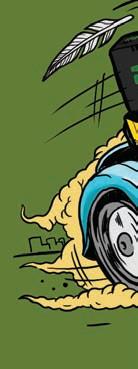


continued from 25

the synthesis seems effortless. On album closer “Pretty Bird,” Fei’s guzheng glistens like sunlight off feathers while Washburn sings in a harsh Appalachian falsetto: “Fly beyond the dark mountains / To where you’ll be free ever more.” It’s one of several tunes on the album, including “Water Is Wide/ Wusuli Boat Song” and “The Roving Cowboy/Avarguli,” that are about travel and freedom; while people throughout the world are nailed down in their own boxes of anger and fear, Fei and Washburn have made an album that can cross borders. In doing so, they’ve declared their love not only for these musical traditions but also for themselves, for others, and for a world where people can thrive together despite those who seek to divide them.
—NOAH BERLATSKY
Sugar High, Love Addict DERO Arcade deroarcade.bandcamp.com


Kris Esfandiari is no stranger to side projects. Since cofounding doom-metal band King Woman in 2009, she’s released solo material under the names Miserable, Kris, Dalmatian, and Nghtcrwler. Her latest project, Sugar High, is a collaboration with Berlin-based songwriter and producer Darcy Baylis, whose credits include recordings by Wicca Phase Springs Eternal and Camp Cope singerguitarist Georgia Maq. The two met and forged a creative connection over Instagram, and in summer 2018 they spent a week together recording in Esfandiari’s Los Angeles practice space. The result is Sugar High’s debut, Love Addict, which actualizes the inner world of someone pining for genuine connection—it transforms the most solitary feelings of love into something that can be shared. Opening track “Vein” pulls listeners into a trance by pairing a twinkling, descending guitar with swelling synths that so ly glow like twilight. From there, in the soporifi c stupor of night, thoughts of longing start to run amok. On “Alone,” Baylis breath-
ily sings about intrusive, lingering emotions over reverberating guitar lines and Esfandiari’s wordless, sirenlike backing vocals. “Asleep,” which includes vocals from LA ambient artist Mirsy, chronicles the agony of waiting for a late-night call that never comes. Sometimes Sugar High seem lost in their own heads, but “Ugly,” the duo’s second single, anchors the album to reality: Esfandiari drops her voice into a deep murmur as she sing-speaks about the dreaded vulnerability of love atop steelheavy synth drones and staccato beats. It’s a sobering comedown after the love-drunk haze of the five previous tracks. Though Love Addict clocks in at just 20 minutes, its ethereal songs feel as expansive as the night sky.
 —MADELINE HAPPOLD
—MADELINE HAPPOLD









Pam Tillis, Looking for a Feeling Stellar Cat


pamtillis.com/looking-for-a-feeling-pams-newsingle



If you’re going to put out your first solo album in 13 years, you’ll probably want to make sure it includes a few songs that will appeal to your longtime fans. What country audiences want is obviously a moving target—country has been shi ing toward including independently minded crossover pop artists such as Kacey Musgraves, so that it’s harder to define what a “true” country star should sound like—but Pam Tillis has a long history of gently pushing the envelope without alienating mainstream listeners. As a second-generation member of the Grand Ole Opry (her father is country legend Mel Tillis) with two CMAs under her belt, Tillis has unimpeachable country cred, but her music career hasn’t been confined to one genre. She got her start in the 70s as a songwriter working mainly with jazz, rock, and R&B groups, and her album debut, 1983’s Above and Beyond the Doll of Cutey (Warner Brothers), is a pop romp in the vein of Cyndi Lauper. She first hit the country charts with 1984’s “Goodbye Highway,” and by the early 90s she’d found a niche (and commercial success) tweaking country’s

26 CHICAGO READER - MAY 7, 2020 ll
Sugar High MARTYNA “GINGER DOPE” WISNIEWSKA
BIT.LY/GOOSEDELIVERS Makeeverymilematter! Sign up to run the 2020 Bank of America Chicago Marathon with Chicago Run! In the current climate, your support will be especially vital in ensuring that Chicago Run continues to advance the health and wellness of over 15,000 Chicago youth through inclusive running and fitness programs. www.chicagorun.org/teamchicagorun
mainstream formula; her 1994 album, Sweetheart’s Dance , hit number six on Billboard ’s Top Country Albums chart thanks in part to the Tejano-flavored swing-pop of “Mi Vida Loca (My Crazy Life).” Tillis’s new album, Looking for a Feeling, released this month on her own Stellar Cat label, highlights her roots in soul and rock as well as appearances from her country-musician friends. Though ballads such as “Last Summer’s Wine,” which Tillis wrote with longtime Nashville hit maker Bobby Tomberlin, could easily fit on country-with-a-capital-C radio, the album’s highest points are when Tillis allows her rocker side to shine. “The Scheme of Things” has a soulful feel that makes her alto seem like it’s in a broken-hearted duet with the bent notes of the lead guitar, and the beautiful “Better Friends” would be at home on an indie folk rocker’s playlist. I’m a little disappointed with her cover of “Dark Turn of Mind,” but only because Gillian Welch and David Rawlings’s 2011 original has a slow, subtle weirdness that seems lost in this version’s Texas shuffle. Still, Looking for a Feeling is a strong and personal set of songs that showcases who Tillis is at her core; it’s a great album from an artist who could easily be resting on her laurels and playing to the 90s retro-country circuit.
—SALEM COLLO-JULIN
Umbra Vitae, ShADOW OF LIFE

Deathwish Inc.
deathwishinc.com/products/umbra-vitae-shadowof-life
The beauty of musical collaboration is that you can never totally anticipate what will happen, even when the people coming together have established aesthetics of their own. Some groups devise a concept and never stray from it, while others incorporate unexpected twists and turns—and Boston postmetal project Wear Your Wounds (started by Converge front man Jacob Bannon) has spawned a whole new band. As the story goes, Bannon and Wear Your Wounds guitarists Sean Martin (formerly of Hatebreed) and Mike McKenzie (the Red Chord) would start rehearsals with gnarly deathmetal riffs that didn’t fit the group’s melodic, mournful template. They had so much fun with it that they started Umbra Vitae as an outlet for that material, recruiting Red Chord bassist Greg Weeks and Job for a Cowboy drummer Jon Rice. The ferocious death metal on their debut album, the Kurt Ballouproduced Shadow of Life , mixes 90s and modern influences with hardcore energy and plenty of grit, anxiety, and rage. The urgent, seething “Mantra of Madness,” with its weighty grooves and hair-raising riffs, indicts a system that offers only meaningless “thoughts and prayers” as nihilistic assailants force crime victims to plead for their lives. Few songwriters in heavy music can write about the heartcrushing agony of human relationships as poetically as Bannon, and the bleak atmospheres and bleaker refrain of “Blood Blossom” (it repeats the phrase “Do not resuscitate”) make cutting ties feel as pleasant as ripping off a Band-Aid that’s been upgraded to industrial-grade adhesive. The music may be fun and games—at least if you consider death metal fun—but the title track, which closes Shadow of Life, tackles some of the album’s heaviest subjects as it spins into a powerful, chaotic rumination on our inner conflicts and struggles.
—JAMIE LUDWIG
For decades, percussionist Hamid Drake and reedist Ken Vandermark have sustained a partnership founded upon a deep engagement with the history of free jazz. Both within and outside the DKV Trio, their long-running ensemble with bassist Kent Kessler, their improvisations o en arise from rhythmic foundations. But they’re also restless explorers, and on Open Border a pair of Italian musicians helps them move into new territory. Neither Gianni Trovalusci nor Luigi Ceccarelli has much background in jazz. The former is a classically trained flutist who plays ancient and contemporary repertoire, while the latter is a composer and electronic musician; each has contributed to experimental theater and dance performances. Over the course of a 35-minute improvisation recorded live in 2018 at the festival Forlì Open Music, the quartet delves into an unstable sound environment where Drake, Trovalusci, and Vandermark can never be sure just what Ceccarelli’s sound processing might do to their instrumental voices. The taps of key pads blow up like soft explosions, and parts of Drake’s drum kit seem to freeze while others flow freely through the open spaces between the two woodwind players. Their darting gestures coalesce and disperse like a flock of birds infiltrated by tiny avian robots. —BILL MEYER
Zango the Third, Aunt ida’s Asteroid Mixtape Self-released zangothethird.bandcamp.com
Chicagoan Frank Zango possesses something like magic: under the name Zango the Third, he’s able to create oddly soothing, stylistically scrambled outsider-soul songs fast enough to fill several fulllengths a year. In early April, he self-released his second album of 2020, Aunt Ida’s Asteroid Mixtape, where he continues to stretch to the outer edges of his pop proclivities; on “They Ain’t Heavy, That’s My Devil” he warps his warmhearted voice into a high-pitched chirp, and on “Woo! Han Solo” he builds an entire melody around a wordless two-syllable vocal loop that sounds like he’s gasping for air after a long, intense workout. Zango punctuates Aunt Ida’s Asteroid Mixtape with absurdist lyrics, audio pranks (a surreal sketch called “Zeitgeist Radio”), and an unexpectedly vulnerable soliloquy (“Dear Aunt Ida. Goodnight Goji”), all of which lend the album an intimate, diaristic quality. Zango frequently builds his songs atop kitschy synth parts reminiscent of 1960s lounge instrumentals, and they bolster his most vivacious pop hooks— the quasi- tropical “My Clothes Will Burn Too,” for instance, uses a fluttering keyboard to shadow the glum, bluesy singing that gives the song its strange gravitas. Had Zango put out Aunt Ida’s Asteroid Mixtape as a limited-run LP in the 1970s, fanatical modern-day collectors of private-press records would surely canonize it; fortunately, it’s just one easily accessible piece in the catalog of a fascinating player who continues to enrich Chicago’s underground.
—LEOR GALIL v


MAY 7, 2020 - CHICAGO READER 27
Ken Vandermark, Hamid Drake, Gianni Trovalusci, and Luigi Ceccarelli, Open Border Audiographic vandermark1.bandcamp.com/album/open-border
MUSICFind more music reviews at chicagoreader.com/soundboard
The Jokers contributed one great single to the 60s garage-rock boom
Their only two recordings have both been reissued on retro compilations, but sketchy liner notes have le the band a mystery till now.
By STEVE KRAKOW
Until recently, 1960s rockers the Jokers were a mystery to me. I’d heard this melodic Chicago-area garage band only on a couple retro compilation albums, which included little in the way of liner notes, and my Internet searches turned up close to nada. Luckily I got the full story from band member Tim Walkoe—one of my favorite ways to put together an installment of Secret History!
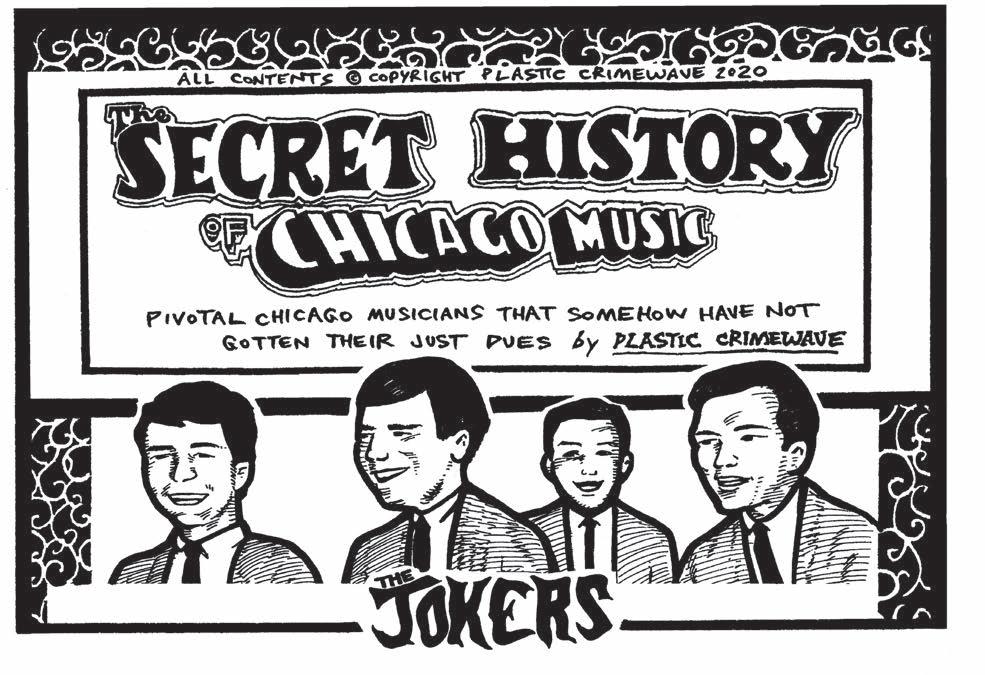
Born in Chicago on September 18, 1946, Walkoe was raised in the Edgebrook neighborhood on the northwest side. His bandmates were all from Valparaiso, where he’d eventually go to college. Walkoe began learning trumpet at age eight and started his first band, the Esquires, at 12. Influenced by the Motown sound, Elvis Presley, and pop stars such as Gene Pitney, he switched to guitar at 17, when he founded a
group called the Electras.
In the mid-60s, Walkoe attended Valparaiso University, where the Jokers ruled the roost— they were one of the more popular rock bands in “the Region,” as northwest Indiana is sometimes called. The Jokers were into screamers like Little Richard and soul singers like Marvin Gaye, and in 1965, when they lost two members, they went looking for a bassist and a guitarist who could double on keys. Walkoe had already been jamming with his Theta Chi fraternity brother Frank Ball, who played guitar, harmonica, and piano, so when he got the call from Jokers guitarist Tom Allison, Walkoe switched to bass and joined the band with Ball.
Walkoe, Ball, Allison, and drummer Ron Januchowski (aka Ron Lee) could all sing, and they got inspired to do something about it
when they saw proto-supergroup the Exceptions play at Club Laurel in Chicago, near Foster and Broadway. (At the time the Exceptions lineup included Peter Cetera, who’d later join Chicago Transit Authority, as well as future Buckinghams multi-instrumentalist Marty Grebb and future Aorta front man and lead guitarist Jim Donlinger.) The Jokers pursued a sound based in R&B, and they built it around their impressive vocal harmonies.
The Jokers worked colleges and clubs in the Region, especially the “El Rancho” near Michigan City, just across the border into Michigan. Walkoe remembers, “In those days, you could not sell alcohol on Sundays in Indiana, so being just over the state line, our weekends were full—but Sunday nights were standing room only.” The Jokers opened for an early Buckinghams lineup and even a young Jackson Five, but at most of their gigs they headlined.
Indiana-based songwriter Bernie Roth, who’d written “Forty Days & Forty Nights” for Muddy Waters (among tunes for many other blues artists), caught wind of the Jokers and thought they’d be perfect to record two of his tunes. In October 1965 the band booked a session at Sound Studios in Chicago, with Stu Black engineering (Walkoe says legendary bassist Willie Dixon, a friend of Roth’s, was in the stu-
dio when they recorded). Their lone single, “I’ll Never Let You Go” b/w “What’cha Gonna’ Do,” was released at the end of the year on Destination Records, founded by Chicago producer Jim Golden (he also ran U.S.A. Records, and both labels released loads of music by locals such as the Buckinghams and the Flock). WLS personalities Art Roberts and Clark Weber gave the record airplay, and “What’cha Gonna’ Do” reached number six on South Bend radio station WJVA. The Jokers were ready to gig like mad to support the 45 in summer ’66, but Allison left and the band broke up.
Walkoe couldn’t fill me in on the post-Jokers activities of all his bandmates, but he does remember that Ball became a successful businessman in Valparaiso, and that Allison went on to manage popular Indiana group the Basooties and open a club called the Stone Balloon. Both tunes from the Jokers’ single were eventually released on compilations: “What’cha Gonna’ Do” on 2006’s Trip in Tyme: Volume 4 (on German label Manic Mustang) and “I’ll Never Let You Go” on 2009’s 2131 South Michigan Avenue: 60’s Garage & Psychedelia From U.S.A. and Destination Records (on upstate New York label Sundazed).
In 1969, Walkoe formed a group called Crucible that included Tom Massari of the Apocryphals (Joe Mantegna’s high school band, covered in SHoCM a few weeks ago) and Tom Ferrone (who’d later work with Dr. John and Jerry Butler). Crucible moved to Los Angeles, where they secured management and landed a regular gig at the Whisky a Go Go, opening for the likes of the Kinks, Elvin Bishop, and Georgie Fame & the Blue Flames. Ferrone soon quit, and his spot was filled briefly by Donnie Dacus, who went on to replace Terry Kath in the band Chicago (for a year or so after Kath’s death in 1978) and star in the 1979 film version of Hair Crucible recorded four songs for the club’s short-lived label, Whisky Records, with Ritchie Blackmore and Ian Paice from Deep Purple playing on a few, but nothing was ever released.
Walkoe returned to Chicago in the early 70s, where Rick Cano of the Flock helped him put together the Eddie Boy Band, who signed to MCA Records for one disappointing 1975 album. In 1983, Walkoe left full-time music and went into comedy back in Los Angeles. Now based in Chicago again, the former Joker has headlined at more than 200 comedy clubs and appeared on HBO, Showtime, Comedy Central, and WGN, among other networks. He continues to perform today. “Apparently I was such a great bass player,” he says, “I became a comic.” v
28 CHICAGO READER - MAY 7, 2020 ll MUSIC
EARLY WARNINGS
will be honored b Anchr Magazine showcase featuring Curls, Fauvely 6/6, 9 PM, Schubas, canceled
GOSSIP
WOLF
IN 2016, a video of Ashley “Slim” Stevenson performing a goosebump- inducing cover of Fleetwood Mac’s “Landslide” on the Washington Blue Line platform went viral. Since then it’s racked up more than 25 million YouTube views, and until the pandemic stopped her, Stevenson continued to sing and strum her acoustic guitar for appreciative commuters. On April 16, she released a full-length of her own knockout songs, Freedom, recorded with local producer Prov Krivoshey. The album de ly captures her sublime guitar work and soulful vocals—with no interruptions from passing trains! “I do eventually hope to perform at the Washington Blue Line again, because it’s where I felt the most free as a musician,” Stevenson says. “But the next goal is to start traveling and creating new content.” For now, you can download Freedom from Bandcamp!
Since debuting in 2018, Hitter have become one of Chicago’s most ferocious bands, and the hi-watt dirt rock on their debut LP, Hard Enough, could power the city’s electrical grid! Singer Hanna “Hazard” Johnson (formerly of Lil Tits), Meat Wave drummer Ryan Wizniak, and guitarist Adam Luksetich (former Foul Tip bassist and Johnson’s bandmate in Lifestyles) recorded the album in October. Bassist Patrick Woodall joined a er the sessions, and Hitter dropped the album last week via Bandcamp. “With a lockdown in full swing and no end in sight, it seems that this is actually the best time to self-release our record,” says Johnson. “Why sit on this piece of rock ’n’ roll gold until things hopefully someday return to normal?” This wolf couldn’t agree more!
Last week local indie-pop six-piece Spun Out (which includes former Ne-Hi members Michael Wells and James Weir) dropped a sparkling new single, “Such Are the Lonely,” that embraces the bouncy melancholy of golden-age New Order. It’d sound really great on a packed dance floor—here’s hoping we can all get together on one soon! —J.R. NELSON
Got a tip? Tweet @Gossip_Wolf or e-mail gossipwolf@chicagoreader.com.

NEW
Thomas Anders & Modern Talking, Sandra 8/20, 8 PM, Copernicus Center b Jill Andrews 6/12, 9 PM, Tonic Room
Arcadian Wild 8/14, 8:30 PM, Tonic Room
Belvederes 6/5, 9 PM, Tonic Room
Big James & the Chicago Playboys 6/26-6/27, 9 PM, Kingston Mines Elijah Bossenbroek 7/10, 7:30 PM, PianoForte Studios Spencer Brown 10/10, 10 PM, Sound-Bar
Blake & Tiffany Brown, Joybird 7/9, 7 PM, Uncommon Ground b
Claire Bryant, Anna Claire Lo is, Jillian Francis 8/29, 8 PM, Uncommon Ground b Jane Bunnett & Maqueque 11/6, 7:30 PM, Logan Center for the Arts b Nick Cave & the Bad Seeds, Weyes Blood 9/19, 7:30 PM, Credit Union 1 Arena at UIC b
Celebrating George Benjamin with Gilles Vonsattel, Amy Owens, Daniel Pesca, Grossman Ensemble 9/25, 8 PM, Logan Center for the Arts b Joanna Connor Band 7/31-8/1, 9 PM, Rosa’s Lounge Dead Can Dance 4/28/21, 6:30 PM, Chicago Theatre b Diagonal, Ester & Rami Atassi, Sex No Babies 6/5, 8 PM, Cafe Mustache Dread Mar-I 7/17, 9 PM, Joe’s Live, Rosemont Tinsley Ellis 9/28, 8 PM, SPACE, Evanston b Emily Blue, Marielle Kra 1/8/21, 7 PM, Chop Shop b Melissa Etheridge 9/26, 7:30 PM, Genesee Theatre, Waukegan b
Grossman Ensemble 6/5, 7:30 PM, Logan Center for the Arts b Hawktail 3/7, 7:30 PM, SPACE, Evanston b Heartache Tonight 7/11, 8 PM, Beverly Arts Center b Jazz is Phish 7/28, 8 PM, City Winery b Vance Kelly & the Back Street Blues Band 6/19-6/20, 9 PM, Rosa’s Lounge Kenny G 10/2, 7:30 PM, Genesee Theatre, Waukegan b Lil Jon 7/31, 8 PM, Brauerhouse, Lombard Charles Lloyd’s Kindred Spirits 12/5, 7:30 PM, Logan Center for the Arts b Matute 8/28, 9 PM, Copernicus Center b Camila Meza & the Nectar Orchestra 9/2, 6 PM, Harris Theater b Monsieur Periné 8/12, 8 PM, City Winery b Hudson Moore, Spencer Crandall 6/5, 8:30 PM, Joe’s Mudd Fest featuring Puddle of Mudd, Fuel, Trapt, Tantric, Outfit, and more 9/5, noon, Brauerhouse, Lombard Music From Copland House & Susan Graham 10/9, 7:30PM, Mandel Hall, University of Chicago b Nielsen Trust, Scott Lucas, Dan Hubbard 12/16, 7 PM, Chop Shop, 18+ Ravi 7/9, 7 PM, Avondale Music Hall b Riff Raff, Jae Mansa 7/11, 8 PM, Brauerhouse, Lombard Johnny Rivera & Caribe Project Orchestra, DJ Carlos Guate 6/27, 10:30 PM, Joe’s Live, Rosemont Sam Robinson Quintet 6/14, 6 PM, Uncommon Ground on Devon b Raulín Rodríguez 9/5, 11 PM, Joe’s Live, Rosemont
Roots of a Rebellion 6/18, 9 PM, Cubby Bear Kurt Rosenwinkel Trio 6/4-6/6, 8 and 10 PM; 6/7, 4, 8 and 10 PM, Jazz Showcase b Alanna Royale, Mr. Gac 7/30, 9 PM, Tonic Room
Gilberto Santa Rosa 9/19, 8 PM, Copernicus Center b Save the Rock ’n’ Roll Festival 12/11-12/13, Reggies’ Rock Club, Cobra Lounge, Liar’s Club, and Live Wire Lounge Bob Schneider 7/30, 8 PM, City Winery b Sensi Trails, Concrete Roots 6/12, 7 PM, Cubby Bear Teenage Bottlerocket, Tightwire 7/4, 7 PM, Chop Shop, 18+ George Thorogood & the Destroyers 9/10, 7:30 PM, Genesee Theatre, Waukegan b
Trout Steak Revival 9/23, 8 PM, SPACE, Evanston b Villa Park Punk Night featuring Fire Cat, Stupid Fascist, Boats, Glow-Ups, Glass Noose 6/7, 7 PM, Brauerhouse, Lombard Watsky 4/23/21, 7 PM, Metro b Max Weinberg’s Jukebox 10/22, 8 PM, City Winery b
UPDATED
Above & Beyond 6/5-6/6, 8 PM, Chicago Theatre, postponed until a date to be determined b Oleta Adams 6/12, 8 PM, City Winery, postponed until a date to be determined b Jhené Aiko 6/17, 8 PM, Chicago Theatre, postponed until a date to be determined b Gary Allan 9/25, 7:30 PM, Genesee Theatre, Waukegan, rescheduled; tickets purchased for the original date
Asking Alexandria 5/29-5/30, 6:30 PM, House of Blues, both shows postponed until a date to be determined b
Atlantis Quartet 5/27, 9 PM, Hungry Brain, canceled Walter Beasley 5/17, 7 PM, City Winery, canceled
Between the Buried & Me 5/19, 8:30 PM, House of Blues, postponed until a date to be determined, 17+
Bloodbath 5/28, 8 PM, House of Blues, postponed until a date to be determined, 17+
Jacob Collier 5/22, 7:30 PM, the Vic, postponed until a date to be determined b Cybertronic Spree 5/15, 9 PM, Lincoln Hall, postponed until a date to be determined, 18+
The Darkness 5/23, 8 PM, Park West, postponed until a date to be determined, 18+ Eden 5/22, 8 PM, House of Blues, postponed until a date to be determined b EOB 5/27, 7:30 PM, Metro, postponed until a date to be determined, 18+ Flora 5/23, 9 PM, Hungry Brain, postponed until a date to be determined
Dat Garcia 6/10, 8:30 PM, Szold Hall, Old Town School of Folk Music, postponed until a date to be determined F b
Geographer 5/15, 10 PM, Empty Bottle, postponed until a date to be determined

Ggoolldd 6/16, 9:15 PM, Empty Bottle, canceled Iration 5/16, 6:30 PM, Riviera Theatre, postponed until a date to be determined
James Taylor & his All Star Band 6/10, 7:30 PM, United Center, postponed until a date to be determined b Journey 7/3, 7 PM, Hollywood Casino Amphitheatre, Tinley Park, canceled; refunds will be issued by point of purchase
King Buzzo 6/20, 10 PM, Empty Bottle, canceled Kuma’s Fest 8/29, 1 PM, Brands Park, canceled Ludo 7/25, 6:30 PM, House of Blues, canceled
Michael McDermott 6/5, 8 PM, City Winery, postponed until a date to be determined b Molchat Doma 5/20, 9:15 PM, Empty Bottle, postponed until a date to be determined
Mohsen Namjoo 5/30, 8 PM, Maurer Hall, Old Town School of Folk Music, postponed until a date to be determined b Anders Osborne 5/14, 6:30 and 9:30 PM, City Winery, postponed until a date to be determined b
Gregory Porter, Ledisi 2/17/21, 7 PM, Chicago Theatre,
rescheduled b Purity Ring 5/26, 7:30 PM, Riviera Theatre, postponed until a date to be determined b Rage Against the Machine, Run the Jewels 7/12-7/13, 8 PM, United Center, rescheduled; tickets purchased for the original dates will be honored b San Fermin 5/28, 8 PM, Maurer Hall, Old Town School of Folk Music, postponed until a date to be determined b Shabaka & the Ancestors 6/13, 8:30 and 10:30 PM, Constellation, canceled
DJ Shadow 5/14, 8 PM, Park West, postponed until a date to be determined, 18+
Snotty Nose Rez Kids 6/12, 8 PM, Schubas, postponed until a date to be determined b
Still Woozy 5/29-5/30, 8 PM, Metro, postponed until a date to be determined b
Struts 5/29, 7:30 PM, Riviera Theatre, postponed until a date to be determined b Tame Impala 5/29, 8 PM, United Center, postponed until a date to be determined b
They Might Be Giants 5/13/21, 8 PM, the Vic, rescheduled; tickets purchased for original date will be honored, 17+
This Wild Life 6/13, 8 PM, Bottom Lounge, canceled Ana Tijoux 7/23, 8:30 PM, Thalia Hall, canceled Toastamania X 6/20, 4 PM, Reggies’ Rock Club, postponed until a date to be determined, 17+
Jeff Tweedy 5/15-5/16, 7:30 PM, the Vic, postponed until a date to be determined, 18+
Verve Pipe 6/20, 8 PM, City Winery, postponed until a date to be determined
Donnie Vie 8/21, 8:30 PM, FitzGerald’s, Berwyn, rescheduled
Vile Creature 6/11, 8 PM, Reggies’ Music Joint, canceled Stephen Wade 4/3/21, 8 PM, Maurer Hall, Old Town School of Folk Music, rescheduled b Warning 10/23, 7 PM, Subterranean, rescheduled b Wild Rivers 8/9, 8 PM, Lincoln Hall, rescheduled; tickets purchased for the original date will be honored, 18+
Winnetka Bowling League 10/3, 8 PM, Subterranean, rescheduled b Winter 6/7, 7 PM, Schubas, canceled, 18+ v
MAY 7, 2020 - CHICAGO READER 29
Never miss a show again. Sign up for the newsletter at chicagoreader. com/early
Bob Schneider JIMMY BRUCHS
CHICAGO SHOWS YOU SHOULD KNOW ABOUT IN THE WEEKS TO COME b ALL AGES F A furry
ear to the ground of the local music scene
WOLF BY KEITH HERZIK
Once
Congress lets
Street pillage Main Street
By LEONARD C. GOODMAN
tial” workers who actually make the country function. Congress’s handling of the current crisis of the pandemic is unlikely to improve its ratings.
loans, and credit card debts are accruing.
The small businesses—restaurants, gyms, and stores—that provide half of the nation’s jobs were ordered to shut down. Their rents are accruing. And with no income coming in, many have little chance of repaying what they owe when the economy reopens.
Congress has responded in typical fashion by protecting its donors—the investor class— the only people in the country who didn’t need help. By unrecorded voice vote, Congress passed the CARES Act, rushing $1.77 trillion in taxpayer money out the door to help their friends on Wall Street. This bailout also saved the stock market and preserved the wealth of the 10 percent of Americans who own 85 percent of the stocks and bonds.
fi rst, and some unemployment relief, if their state’s system is functioning after the flood of new claims. (In the last six weeks, more than 30 million workers have applied for unemployment compensation.)
Governments of other countries are covering wages to keep workers in their jobs until this emergency is over. A similar plan was proposed in both the Republican-controlled Senate and the Democratic-controlled House. But it wasn’t taken seriously or brought to the floor for debate. Neither of the two corporate-backed parties that share power in the U.S. believe that any drastic measures are necessary to save Main Street.
Congress did set up a loan program for small businesses, the Paycheck Protection Program (PPP). But the big banks who were put in charge of distributing the loans gave much of the money to publicly traded chains that were allowed to claim small business status under a loophole written into the bill by their lobbyists.
Many economists are predicting a dangerous explosion in a matter of months when rents and mortgages cannot be paid, businesses fail, and temporary layoffs turn into permanent job losses.
As was the case in the 2008 bailout, Congress has assured that none of the pain will be borne by its big donors. Bank of America, Citibank, Wells Fargo, and JPMorgan Chase won’t lose a penny. Their executives will get their bonuses and their investors will get their dividend checks. Once again, big banks have been allowed to collect their profits on risky loans even when those loans go bad. In other words, the big banks’ risk has been socialized—covered by the taxpayers—while their profits remain privatized. This is capitalism in the 21st century.
And following the playbook of the 2008-09 bailout, the Fed is making funds available to their Wall Street cronies to buy up distressed Main Street assets at fire-sale prices. Big companies will pick up small companies. Blackstone will buy up more real estate. The economy will be even more centralized.
Over the last decade, Congress’s approval ratings have hovered around the midteens or low 20s, reflecting the reality that our representatives in Washington, D.C., serve the needs of big donors while throwing an occasional rhetorical bone to the “essen-

Working Americans are facing an unprecedented disaster. Before the virus hit, half of them lived paycheck to paycheck and didn’t have $400 saved for an emergency. Now they have been ordered to stay home. Many have no income while their rents, utility bills, student
And to add insult to injury, the Federal Reserve is providing trillions more in free money to fortify the banks so they can continue to collect 21 percent interest on your credit cards and buy up your distressed assets. Ordinary Americans will receive a onetime payment of $1,200, if their creditors don’t scoop it up
States and municipalities are also facing rapidly approaching disasters. Unlike the federal government, states and cities cannot run a deficit or print money. They have to actually pay for things like public services and unemployment insurance by collecting revenues from sales taxes and income taxes. And they are not getting those revenues.
30 CHICAGO READER - MAY 7. 2020 ll
OPINION
Who is Speaker Pelosi working to protect? Hint: not you, America.
GAGE SKIDMORE / CC BY-SA 2.0
Leonard C. Goodman is a Chicago criminal defense attorney and co-owner of the newly independent Reader.
NATIONAL POLICY
again,
Wall
Coronavirus bailouts are helping big donors while leaving small businesses and families behind.
Have a strong opinion or perspective you’d like to share? We invite you to send ideas to pitches@chicagoreader.com








Nevertheless, only about 5 percent of the $3 trillion in total coronavirus relief has gone to help the 50 states. Senate majority leader Mitch McConnell suggested that Congress might let states go bankrupt, meaning among other things, that workers’ pensions would likely evaporate.


House speaker Nancy Pelosi was recently asked whether she and Senate minority leader Chuck Schumer made a “tactical mistake” in not providing any help for state and local governments in the relief bills. In response, she told CNN’s Jake Tapper to “just calm down.” Tapper reportedly did calm down. But it’s not clear if ordinary Americans will just calm down when their businesses are closed and their families are thrown out into the streets.
The Democratic Party that controls the House still tries to sell the outdated notion that it is fighting for working people. Yet, despite its powerful allies in the mainstream press, fewer and fewer Americans are buying the ruse. First, we all just watched as the entire Democratic Party establishment came together to stop an insurgent candidate in the presidential primaries, Bernie Sanders, whose major sin was his refusal to sell out to Wall Street donors. Instead, the working man’s party has united behind Joe Biden, a reliable servant to Wall Street banks for nearly 50 years.
In a time when the health of our nation depends on a health care system capable of providing our neighbors with testing and treatment for a highly contagious disease, even if there is no profit to be made, the nominee for president of the working man’s party has promised his donors to veto a Medicarefor-All bill if it crosses his desk.

A second reason working Americans are less willing now to “vote blue no matter who” is that they remember the 2008-09 bailout. Back then, Barack Obama was in the White House and the Democrats controlled both the House and Senate. Wall Street banks crashed the economy by selling exploding mortgages to poor people and then packaging those worthless mortgages into worthless investment securities. Obama bailed out the banks—his major campaign sponsors and donors—and he let ten million Americans lose their homes. Wall Street companies like Blackstone were allowed to buy up foreclosed homes for pennies on the dollar, and then very quickly raise rents on Americans. As a result, Black and Brown people who graduated from four-year colleges lost 70 percent of their wealth under the fi rst Black president, accord-
OPINION
ing to a Federal Reserve study.



The Democratic Party learned one important lesson from 2008: it is best not to control the o ce of the president and both houses of Congress. Too much power makes it harder to serve the interests of the big donors while still pretending to fi ght for ordinary working Americans. It is much better to split power and blame the Republicans for screwing working people.

Did you ever wonder why Democrats always lose when Republicans try to game the system to silence minority voices? Republicans encounter little resistance when they gerrymander districts to make them safe from minority voters, suppress minority voters at the polls, enact filibuster rules that allow corporate interests to block popular legislation, and preserve the arcane Electoral College. All of these schemes benefit the corporate patrons of both parties by making it less costly to rig the system. Corporations don’t need to own all 535 members of Congress, or even a majority of them, to control the levers of power.

It is generally acknowledged that the situation today is more dangerous than the fi nancial collapse of 2008. The coronavirus has shut down large parts of the economy. And because we were so ill prepared for the pandemic, there is great uncertainty as to when or how the economy will restart, or what it will look like.


Since our government has refused to bail out small businesses or ordinary working people, prominent economists like Professor Michael Hudson at the University of Missouri at Kansas City have warned that the government will need to intervene and allow Americans to write down debts that cannot be paid, or we will face economic meltdown. But writing down debts would harm the big banks, so it probably won’t happen under this Congress or this president.
I like to end columns on a positive note. I have long advocated using democratic means to wrest political power from corporations and return it to the people. But right now, the economy appears to be headed o a cli and the corporations have a tight grip on all the controls. And I am not smart enough to know how people can take back power without a violent revolution. One thing I am sure of is that when American families start getting kicked out of their homes, the Democrats will blame the Republicans, and the Republicans will blame anyone but themselves. v
MAY 7. 2020 - CHICAGO READER 31
@GoodmanLen the cannabis platform a Reader resource for the canna curious nuMed.com | 1308 W. North Ave Chicago’s friendliest cannabis shop Thursdays on Cannabis Conversations chicagoreader.com/joravsky Cannabis Conversations chicagoreader.com/ joravsky To advertise, call 312-392-2934 or email ads@chicagoreader.com www.neuromedici.com 312-772-2313 Findouttoday ifmedical cannabisorinfusiontherapyis rightforyou.Telemedavailable! Yourpartnersinhealthandwellness. Serving medical cannabis patients since 2015. An Essential Calm. Day or Night. Whole-plant hemp formulations for peace of mind and body. mineralhealth.co GET INVOLVED! The Reader 420 Companion is filled with great recipes, activities and coloring pages Your purchase supports the Reader. 15% of the proceeds will be donated to the Chicago Coalition for the Homeless. chicagoreader.com/420book
OPINION



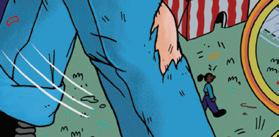

SAVAGE LOVE

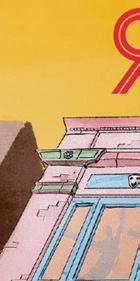
SAVAGE
Q: I’ve been with the same amazing man a dozen years. We’ve had our ups and our downs, same as any other couple, but these days life is better than it ever has been for us. Except in the bedroom. A few years ago he started having fantasies about sucking dick. Specifically, he wanted to suck a small one because his is very big and he wanted to “service” a guy who’s less hung than he is. Which is fine except it’s now the only thing that gets him off. We seldom have sex because his obsession with sucking off a guy with a small dick makes me feel unattractive and to be honest I don’t share the fantasy. I even let him suck a dude off in front of me once and I didn’t enjoy it at all. He tells me he still finds me attractive but when we’re having sex the talk always goes to how he wants to take “warm and salty loads”


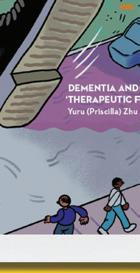
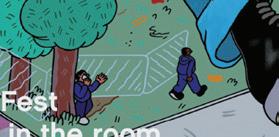
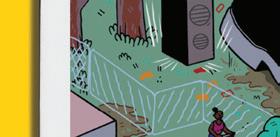
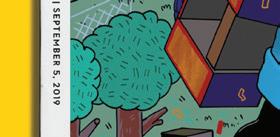



down his throat. I’ve told him I’m not into it but he enjoys talking about it so much he can’t help himself. I thought allowing him to live out his fantasy would help him “get over it,” so to speak, but that didn’t happen. So now we just don’t have sex except once every few months. I’m not sure how to make him see that it’s just not my thing and to get the focus back on just the two of us.

—LOVES OBSESSES ABOUT DICK SUCKING








A: If you can look at your husband and think, Things are better than ever!, despite the dismal state of your sex life, LOADS, I hate to think what life with him used to be like.

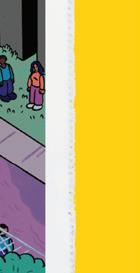
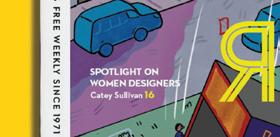

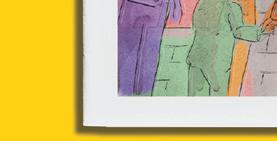
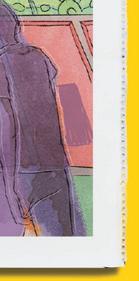




There’s not an easy fix here. If you’ve already told your husband the “warm and salty load” talk is a turnoff and made it clear it’s the reason your sex life has pretty much collapsed and never-











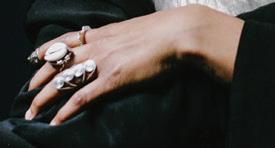







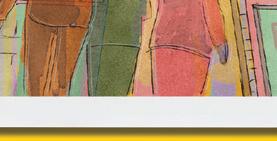



theless he persists with the “warm and salty load” talk, well, then your husband is telling you he would rather not have sex than have sex without talking about warm and salty loads.
Now I’m assuming that you actually told him how you feel, LOADS, in clear and unambiguous terms and that you said what you needed to say emphatically. And by “emphatically,” LOADS, I mean, “repeatedly and at the top of your lungs.” If not— if you’re doing that thing women are socialized to do, i.e. if you’re downplaying the severity of your displeasure in a misguided effort to spare your husband’s feelings—then you need to get emphatic. Sometimes it’s not enough to tell, LOADS, sometimes you have to yell.





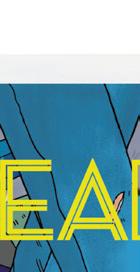














You’re obviously GGG— good, giving, and game—but your husband has taken you for granted and been almost



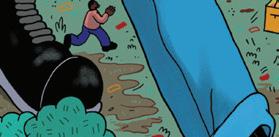
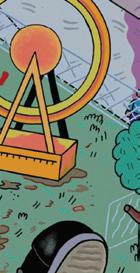











32 CHICAGO READER - MAY 7, 2020 ll
My husband fantasizes about sucking o other men Giving in to a kink won’t get it out of someone’s system. By DAN
Providing arts coverage in Chicago since 1971. www.chicagoreader.com
OPINION


unbelievably inconsiderate. Because even if he needs to think about sucking dick to get off, LOADS, he doesn’t need to verbalize that fantasy each and every time you fuck. Even if you were into it, which you’re not, it would get tedious. And it wasn’t just selfish of him to ignore how you felt, it was shortsighted. Because women who are willing to let their husbands talk about wanting to suck a dick— much less suck a dick—aren’t exactly easy to come by.
I guess what I’m trying to say, LOADS, is that your husband really blew it. If he hadn’t allowed this obsession to completely dominate your sex life—if he’d made some small effort to control himself—you might’ve been willing to let him act on his fantasy more than once. But as things stand now, it’s hard to see how you come back from this, LOADS, because even if he can manage to STFU about warm and salty loads long enough to fuck you, you’re going to know he’s thinking about warm and salty loads. So the most plausible solution here—assuming that you want to stay married to this guy—would be for him to go suck little dicks (once circumstances allow) while you get some decent sex elsewhere (ditto).
Finally, a lot of vanilla people think—erroneously—that acting on a kink will somehow get it out of a kinky person’s system. That’s not the way kinks work. Kinks are hardwired and kinky people wanna act on their kinks again and again for the exact same reason vanilla people wanna do vanilla things again and again: because it turns them on.

Q: I have what most people would consider an amazing life. I have two healthy kids, financial security, a stable career, and a husband who is the exact partner I could ever want. I really couldn’t ask for more. I just have one
issue: my husband wants to be intimate more o en than I do. We are both nearing 40, and his libido has not slowed down. I, on the other hand, due to a combination of being busy with work and us both taking care of the kids (especially during the lockdown), find myself with a decreased sexual drive. Because of all my (and our) obligations, I find myself alternating between a state of tiredness, anxiousness, or distraction, none of which get me “in the mood.” We’ve talked about the situation, and he is absolutely respectful when we do so, but he has made it clear he’s very frustrated. I think once a week is more than enough and he could go multiple times a day. It’s to the point where he feels he’s begging just to fit some “us” time into our lives, which he says makes him feel undesirable and humiliated. There isn’t anything wrong with him that leaves me not wanting to engage in physical intimacy, we just seem to have different physical intimacy schedules, and it’s putting a serious strain on our relationship. How can we work to find a comfortable middle ground, or at the absolute least, help me explain to him why I’m not as randy as he is? —COMPLETELY LOST IN TACOMA


A: You don’t need to cra an elaborate explanation, CLIT, as what’s going on here is pretty simple: your husband has a high libido and you have a low one.

What you need is a reasonable accommodation. Opening up your marriage obviously isn’t an option right now, CLIT, and it might not be an option you would’ve considered even if it were possible for your husband to find an outlet (or inlet) elsewhere. But there is something you can do.

Your husband is doubtless
jacking off a lot to relieve the pressure. If there’s something he enjoys that you don’t find physically taxing and if he promises not to pressure you to upgrade to intercourse in the moment, then you could enhance his masturbatory routine. Does he like it when you sit on his face? Then sit on his face—you can even keep your clothes on—while he rubs one out. Does he love your tits? Let him look at them while he beats off. Is he a little kinky? It doesn’t take that long to piss on someone in the tub and it wouldn’t mean adding something to your already packed schedule, CLIT, as you have to find time to piss anyway.
It would be unreasonable of your husband to expect sex three times a day—that would be an irrational expectation even if you were childless and independently wealthy—but your husband isn’t asking you to fuck him three times a day. He wants a little more sexual activity, some erotic affirmation, and more couple time. Giving him an assist while he masturbates ticks all those boxes. That said, this will only work if your husband solemnly vows never to initiate intercourse during an assisted masturbation session. If you catch a groove and start feeling horny and wanna upgrade to intercourse, you should. But he needs to let you lead because if he starts pressuring you for sex when you’re just there to assist then you’re going to be reluctant to help him out.
If he can follow that one rule, CLIT, you’ll feel more connected and you’ll probably wind up having more PIV/ PIB/PIM sex—maybe twice a week instead of once a week—but it will be sex you both want. v
Send letters to mail@ savagelove.net. Download the Savage Lovecast at savagelovecast.com.
MAY 7, 2020 - CHICAGO READER 33
@fakedansavage GetYourSwag! www.chicagoreader.com/shop 175 N Ada Street, Suite 200, Chicago, IL 60607
CLASSIFIEDS

LEGAL
This letter is to notify that on May 25, 2020 at 9:30 a.m. an auction will be held at 83rd & Halsted Self Storage, Inc., located at 8316 S. Birkhoff Ave, Chicago, IL 60620, to sell the following articles held within said storage units to enforce a lien existing under the laws of the state of Illinois.




260 Dorian Richwell
157 Kyrih Faulkner
304 Reginald Bullock
This letter is to notify that on May 25, 2020 at 9:30 a.m. an auction will be held at Hyde Park Self Storage, Inc., located at 5155 S. Cottage Grove Ave, Chicago, IL 60615, to sell the following articles held within said storage units to enforce a lien existing under the laws of the state of Illinois.
544 Chanel Long
469 Phyllis Robinson
George Kagan
Thomas McElroy
Lazinnial Brandon
Mkosi M. Miller
Regina M. Hightower
Steven Watson
Patricia Baines
Golden
Watson
Blair
Carpenter
B. Weaver
This letter is to notify that
May 25, 2020 at 9:30






an auction will be held at South Shore Self Storage, Inc., located at 7843 S. Exchange Ave, Chicago, IL 60649, to sell the following articles held within said storage units to enforce a lien existing under the laws of the state of Illinois.
Johnnie Howard
Bryon Demons
Clopton
Taylor
Cheetam
Lucas
This letter is to notify that on May 25, 2020 at 9:30 a.m. an auction will be held at Aaron Bros. Self-Storage, Inc., located at 4034 S. Michigan Ave, Chicago, IL 60653, to sell the following articles held within said storage units to enforce a lien existing under the laws of the state of Illinois.
McDaniels
Moore
Powell
Lyda
Lee Moore
Portluck
Moore
Ronan
Waddy
Weston
Project Manager: Mnage complex proj’ts involving all areas of technology




trade. Initiate, plan, schedule, cntrl, & execute info technology proj’ts. Direct & oversee the wrk of proj’t engg team, incl Comp Sw Engrs & Web Applicat’n Dvlprs. Maintain & upgrade both the security of the netwrks as well as informat’n security of clients.

Assessment in .NET & Masters Deg in Comp Engg, Comp Sci, or rel fld. Resumes to: Americaneagle.com, Attn: HR, 2600 S. River Rd., Des Plaines, IL 60018.
Network Objects, Inc. seeks Master’s only/equiv.: SAP SD Functional Analyst V (NSFAV20): Work on various applications to build Upgrades and Patches. Mail resume with job ID # to HR: 2300 Barrington Rd., Suite 400, Hoffman Estates, IL 60169. Unanticipated work site locations throughout U.S. Foreign equiv. accepted.


COMPUTER/IT: Kraft Foods Group Brands LLC seeks Manager Data Engineering COE Analytics Solutions Supply Chain to work in Chicago, IL & be responsible for introducing technical capabilities to expand & optimize our data & data pipeline architecture & optimize data flow & collection for cross functional teams. Degree & commensurate exp. req›d. Apply online: kraftheinzcompany. com/applyNA.html at # R-27474
Quantitative Researcher to develop trading strategies. General Welfare Group, Oak Brook, IL. Send resume to: Linda Oliva, 611 Enterprise Drive Oak Brook, IL 60523.
TransUnion, LLC seeks Lead Developers for Chicago, IL location to independently design & dev sw apps. Master’s in Comp Sci/Comp Eng/any Eng field+2yrs exp OR Bachelor’s in Comp Sci/ Comp Eng/any Eng field+ 5yrs exp req’d. Req’d Skills: Tableau Desktop & Server, AbInitio GDE , Express>IT (ACE & BRE), Control Center, Jasper, Hyperion IR, Unix/Linux, Shell scripting, Python, VBA Macro, Core Java, JSON, XML, Agile, CI/ CD, Jenkins, Dremio, Hive, Oracle, Sybase, SQL Developer, Autosys.
WANT
Send resume to: R. Harvey, REF: JS, 555 W Adams, Chicago, IL 60661
Faithful+Gould Inc. seeks a Project Controls Manager. Responsible at a Senior Level for providing and managing project controls for large scale commercial and industrial projects including a multi-billion dollar oil refinery to ensure established procedures for baseline schedule and cost control budgets are implemented by team and projects are completed within budget; Provide full range of project control services (including estimating forecasting, cost controls scheduling, developing, historical cost data base, and project cost support services) to engineering and construction project team leaders; Manage, revise and maintain status of detailed project cost estimates/forecasts to include all phases of project execution including design/ engineering, material/ equipment procurement and deliveries, and construction contracts from start up activities to closeout, track and analyze project costs including budgets, commitments, actuals, accruals and forecasts; Analyses including forecast to budget and estimate, forecast to actuals, and contingency analysis; Contribute to development and improvement of project controls systems. Reqs: 7 years of experience within the energy industry providing finance and project controls services to complex capital investment projects with budgets in excess of US $30 million within the Oil and Gas and/or Nuclear Power sectors including performing contact and project management services (cost management, scheduling, project planning and estimating cost controls procurement, and analysis of materials, costs, contracts, risks and data) with responsibility for controlling, communicating and reporting on all costrelated functions associated with project and ensuring that all work fully complies with existing project controls and financial processes for projects. In lieu of 7 years of experience as described above, will accept Bachelor’s degree in construction management or a closely related field plus 5 years of experience as specified above.
Locations: Chicago, IL and Whiting, IN. Send resume/cover letter to: Amy Gough, Recruiting Coordinator, Human Resources @ amy. gough@snclavalin.com ref #37268/964
Loyola University Chicago is seeking a Lecturer in Chicago, IL to teach courses in Physics, from introductory to advanced. Please send resume to crasinariu@luc.edu & ref job 051282.
MARKETPLACE ADULT SERVICES



Danielle’s Lip Service, Erotic Phone Chat. 24/7. Must be 21+. Credit/ Debit Cards Accepted. All Fetishes and Fantasies Are Welcomed. Personal, Private and Discrete. 773-935-4995
FOR SALE
Martial Art Books 500 for $1000 all like new,
all styles and weapons too. Please call Barry at 224-616-1308
TO OUR CLASSIFIEDS?
E-mail classified-ads@chicagoreader.com with details or call (312) 392-2970
sexy senior searcher Although there’s some snow on the roof, this active 60+ still has a fire down below...seeking a lady who enjoys life.
Attitude important... appearance not. windy_city_lover@yahoo. com Submit your Reader Matches ad today at chicagoreader. com/matches for FREE.
Matches ads are not guaranteed and will run in print and online on a spaceavailable basis.



34 CHICAGO READER - MAY 7, 2020 ll
JOBS ADMINISTRATIVE SALES & MARKETING FOOD & DRINK SPAS & SALONS BIKE JOBS GENERAL REAL ESTATE RENTALS FOR SALE NON-RESIDENTIAL ROOMATES MARKETPLACE GOODS SERVICES HEALTH & WELLNESS INSTRUCTION MUSIC & ARTS NOTICES MESSAGES LEGAL NOTICES ADULT SERVICES
NOTICE
135
427
71
379
10169
10124
84
377 Melvin
10129 Steven
53 Kimberly
365 William
10121 Michael
on
a.m.
122
S027
417 Victor
606 Diane
344 Jerome
412 Douglas
208 Derrick Frye 229 Ishmael
321 Nona Lee
2000 Nina
329 Tanya
6319 Nona
580 Jamal
351 Nona Lee
558 Kamla
345 Kermit
552 Michael
585 Danisha White JOBS Technical
&
Reqd:
TO ADD A LISTING
Chicago's Free Weekly Since 1971 We Couldn't Be Free Without You— Support Community Journalism Looking for someone to talk to in quarantine besides your roommate and your parents? Find someone new by placing a FREE Matches ad in next week’s edition of the Reader. chicagoreader.com/matches







































MAY 7, 2020 - CHICAGO READER 35 FINANCING AVAILABLE Licensed, Bonded & Insured—IL Roofing Lic. #104.013526 For 40 years, 30,000+ satisfied customers have trusted Second City. • ROOFING • BRICKWORK • GARAGES SHINGLE ROOFS NEW GARAGESFLAT ROOFS ROOFING, GUTTERS & MORE the platform The Chicago Reader Guide to Business and Professional Services www.herreralandscapes.com llllllllllllllllllllllllllllllllllllllllllllllllllllllllllllllllllWe bring your outdoor vision to life! DISCOVER YOUR BLISS www.intimate-bliss.com *WARNING: Must be 18 years or older to visit website and/or place order. To advertise, call 312-392-2934 or email ads@chicagoreader.com SAVE BIG ON A NEW HVAC SYSTEM FINANCING AVAILABLE CREDIT CARS ACCEPTED Up to $2,500 savings for a limited time! Call today for a free estimate! 773-895-2797 | www.MironHVAC.com -Energy Efficient -Innovative comfort features -Great maintenance contracts -24-Hr Emergency Service Psychic ReadingsPalm and Tarot If you are worried, troubled, sick or unhappy through love, business, marriage, luck or whatever your problem may be, I have reunited the separated, healed the sick and help many people with money problems. Whereothershavefailed.Ihave succeeded. I will not ask what you came in for. I will tell you. (773)-540-5037 1222 E 47th St She guarantees to help you. No problem is too big for her COLLABO TIVE PREMARITAL FAMILY DIVORCE MEDIATION Brigi e Schmidt Bell, P.C. Phone and Video Consultations. Call today. BrigitteBell.com Lawyers@bsbpc.com | 312-360-1124 travel home improvement psychic real estate advertising books romance legalfuneral services entertainment American Owned American Made We Offer Quality Affordable • At Need Funeral Services • Pre-Planned Funeral Services • Traditional Funeral/Cremation Services • Direct Cremation/Direct Burial • Memorial Services • Specializing in Veterans Services 773-956-4000 5112 S. Western Ave | Chicago, IL 60609 “Let all that you do be done in love” - 1 Cor 16:14 www.GraceAndMercyFS.biz Serving Chicagoland and NW Indiana GraceMercyFS_Reader_033120.indd 1 4/2/20 10:10 AM YOUR AD HERE


Do Not Touch Puzzle Piece together the first of our iconic Stay Home cover series. This is a 432-piece, 18” x 24” puzzle. The cost of this puzzle is $60 + $10 for shipping. (U.S. orders only) Chicago Reader chicagoreader.com/puzzle $24.20: Printed, bound copy, includes a digital download (+ $4.20 shipping & handling) Order your printed copy by 4/23 to be guaranteed a book from the 1st print run. $14.20: Digital download The Reader 420 Companion is filled with great recipes, activities and coloring pages. Details may be found at chicagoreader.com/420book Your purchase supports the Reader 15% of the proceeds will be donated to the Chicago Coalition for the Homeless 21+ only
















 By ISA GIALLORENZO
By ISA GIALLORENZO


















































 By MIKE SULA
By MIKE SULA









 By BEN JORAVSKY
By BEN JORAVSKY








 By LIESL OLSON
By LIESL OLSON
 BY KERRY CARDOZA
BY KERRY CARDOZA
















 @booksnotboys
@booksnotboys



 By CATEY SULLIVAN
By CATEY SULLIVAN






























 —MADELINE HAPPOLD
—MADELINE HAPPOLD

















































































































































































